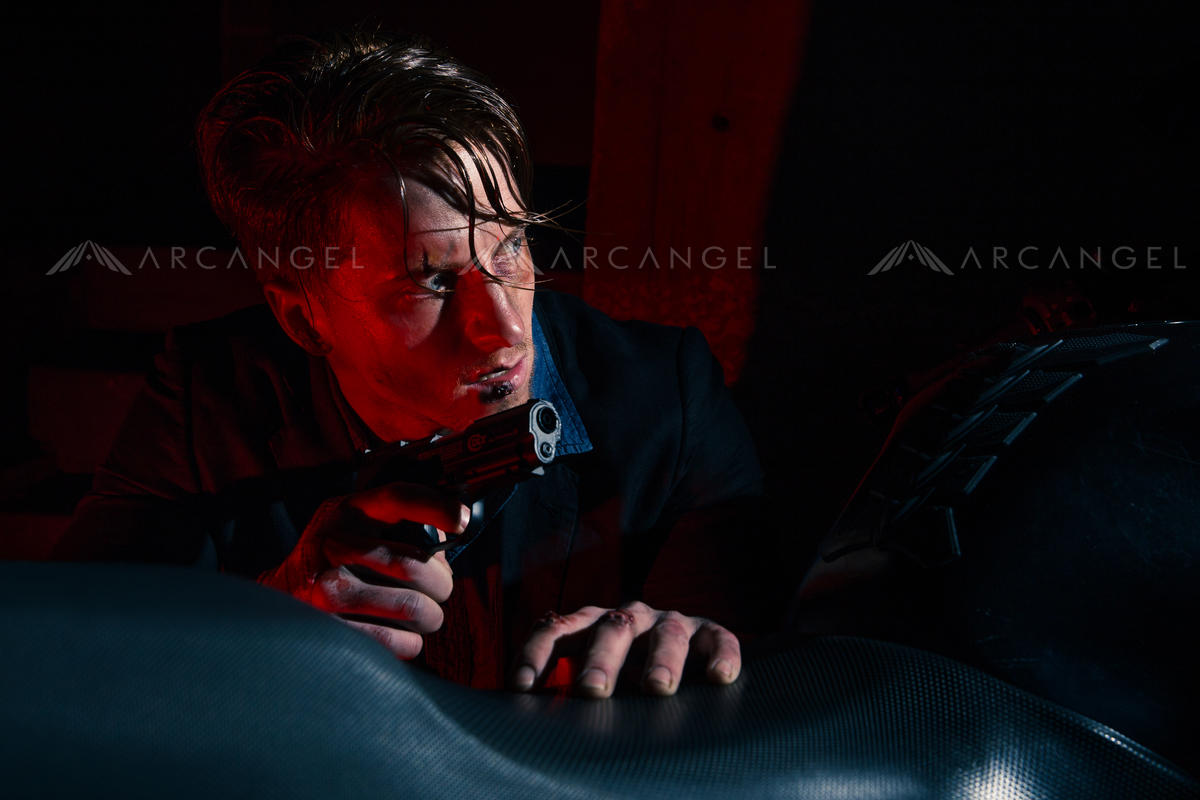How to photograph people with guns for book covers
Many thriller titles will feature a hero (or villain) wielding a gun. Here are some of our top tips on how to photograph people with guns for book covers…
1. Attitude
As a starting point, clever use of book cover photography and the post production element, means you should think about the narrative and potential situations that might involve the books character using a gun.
Could they be protecting someone? Hunting an enemy? Defending themselves?
Are they someone accustomed to guns? A soldier, a spy, or a law enforcement officer?
Or are they someone forced to use a weapon in extreme circumstances?
Whatever the narrative situation, work with your models to ensure that their body language and facial expression shows the right attitude. The models need to be performing when holding weapons – not just posing.
Think about the book and what the story says about the character and try to reflect that in your photography. The book cover is a mirror of what the author intends to display.
A generic stock photo is not the ultimate aim but more so a creative interpretation of the books main character.
Active poses
For a strong action thriller mood, use movement and active poses.
This could be someone aiming a gun – perhaps looking down the barrel. The facial expression must convey a strong sense of purpose, whether it’s haughty, defiant, or villainous.
Having a model looking for or at something can be another effective active pose. They might be looking at the camera, glancing over their shoulder at a pursuer, or looking at something or someone out of shot. Again, conveying the sense of purpose will be critical.
A very popular thriller concept is to have a person running, often with the sense that they are chasing or being chased. Clothes and hair blowing in the wind create energy in the movement, and turning to look behind or at the camera instantly suggests someone being followed.
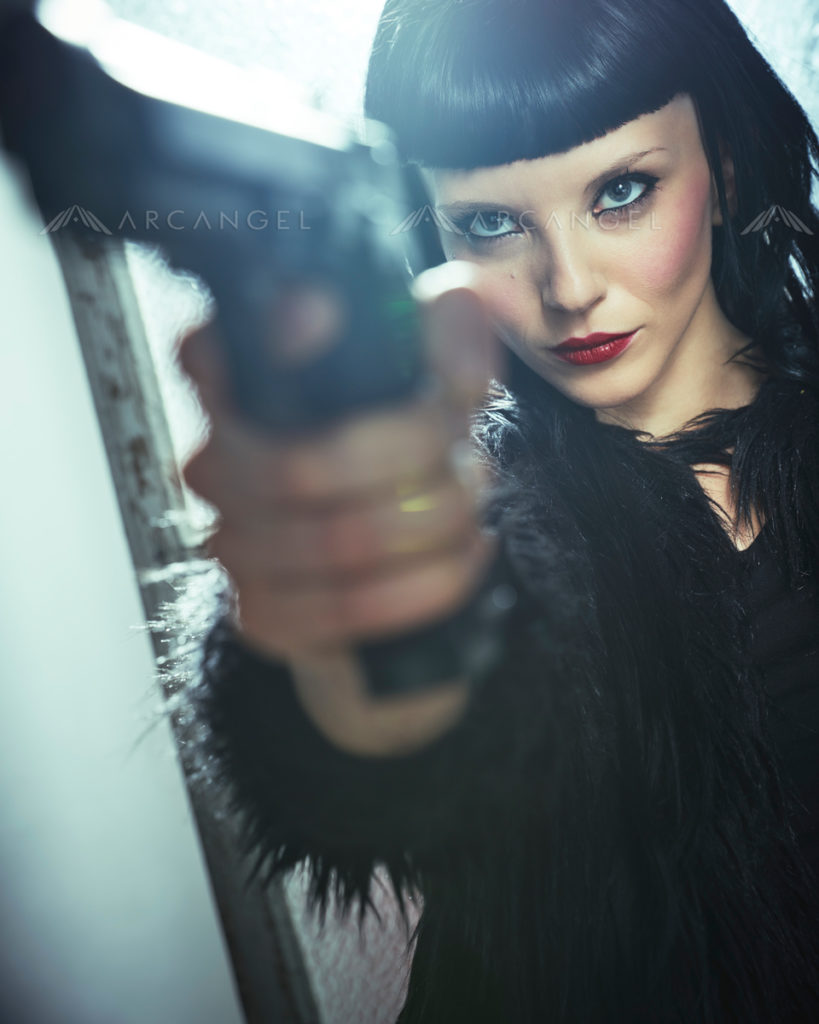
A1754900 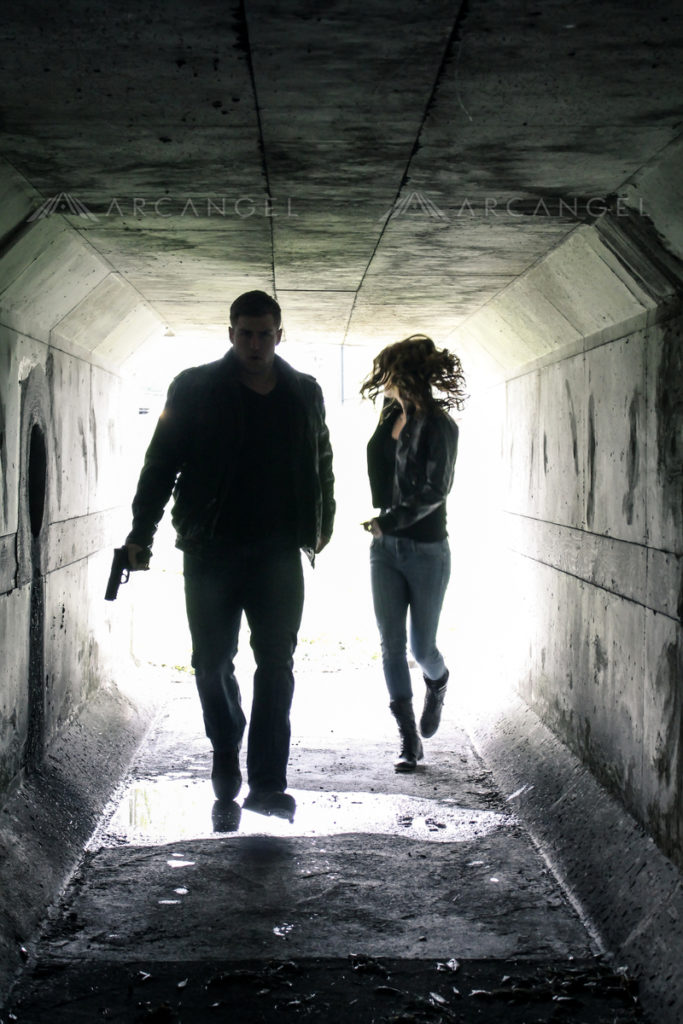
AA1335041 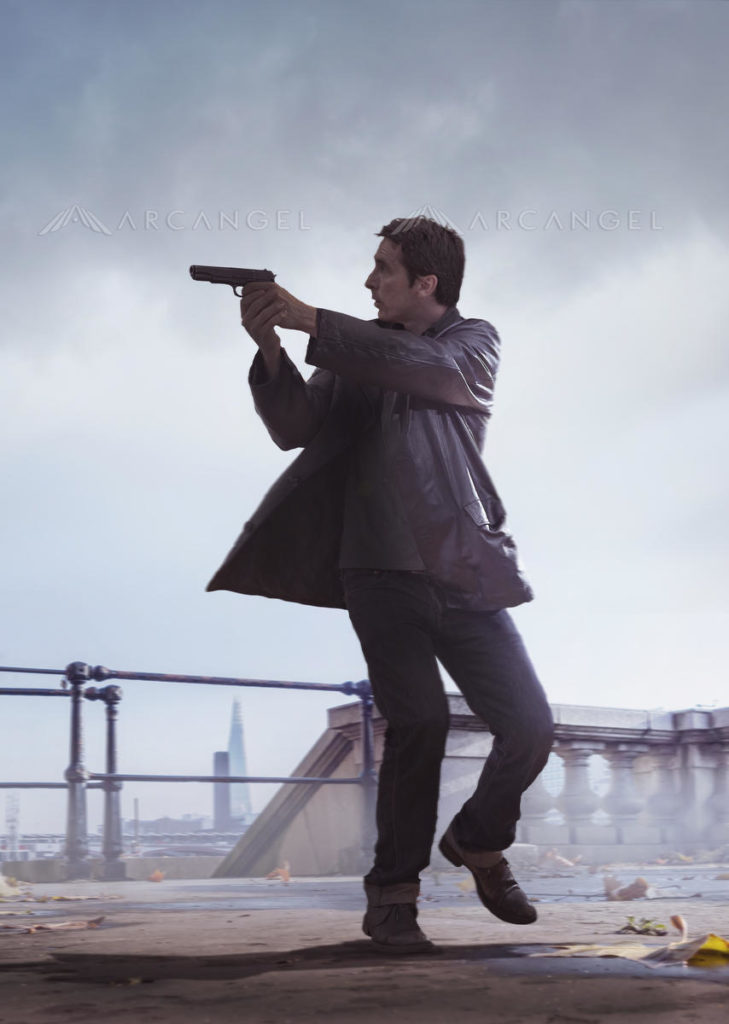
AA11278131 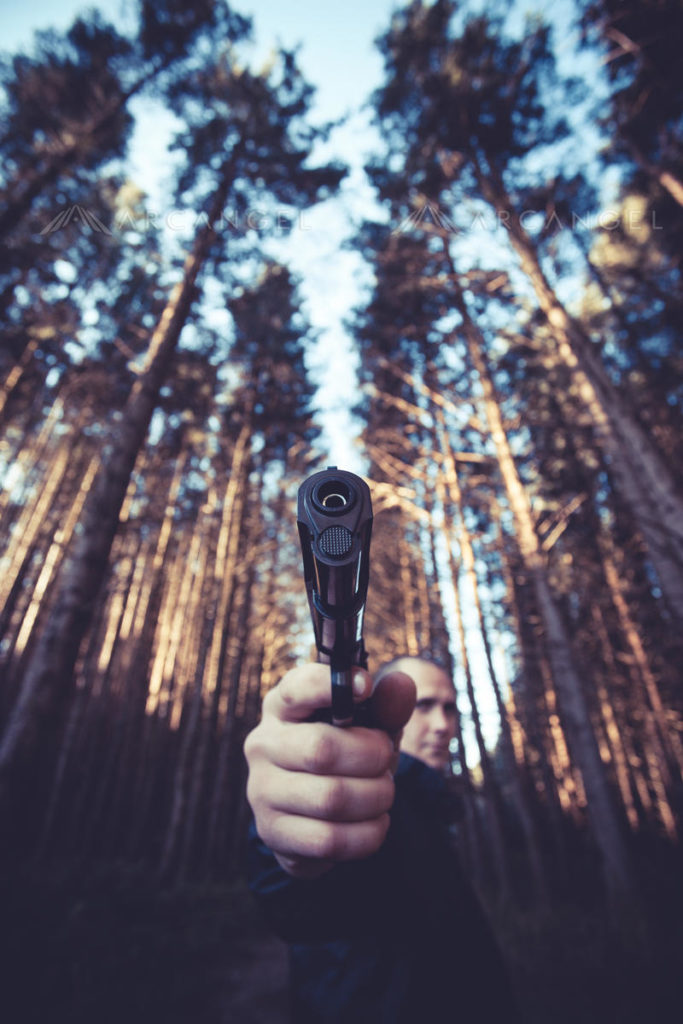
AA11226692 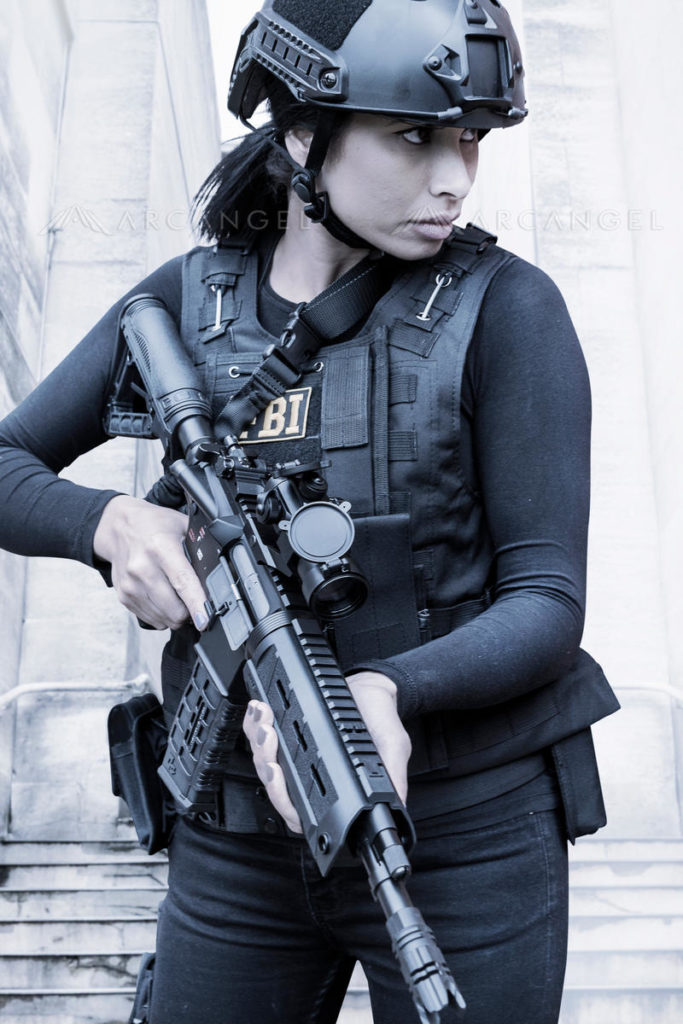
AA230631 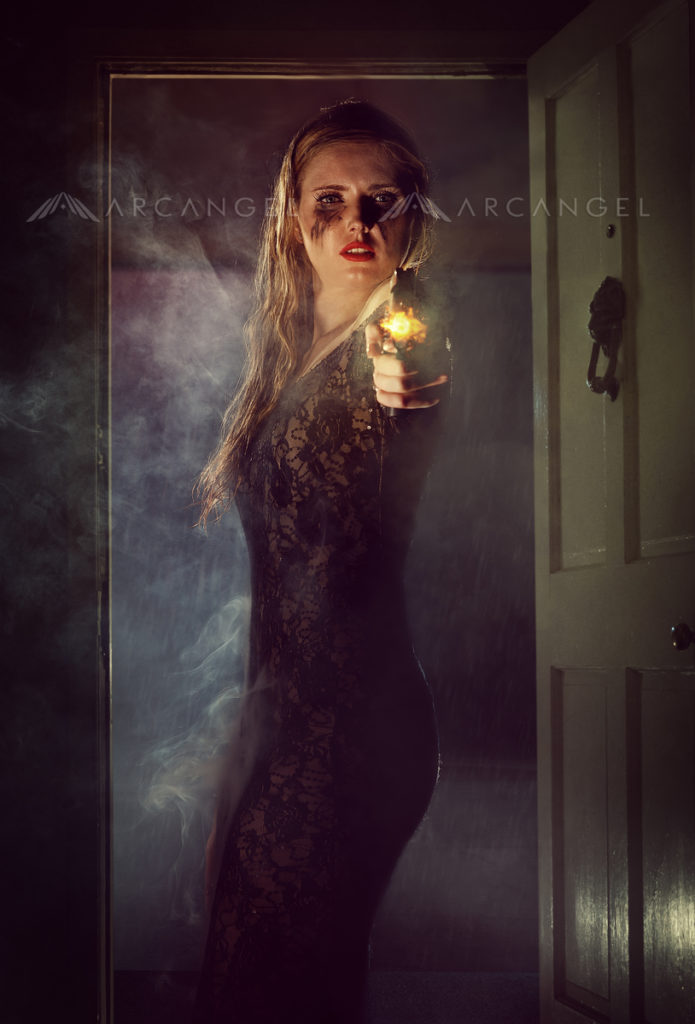
AA1494825 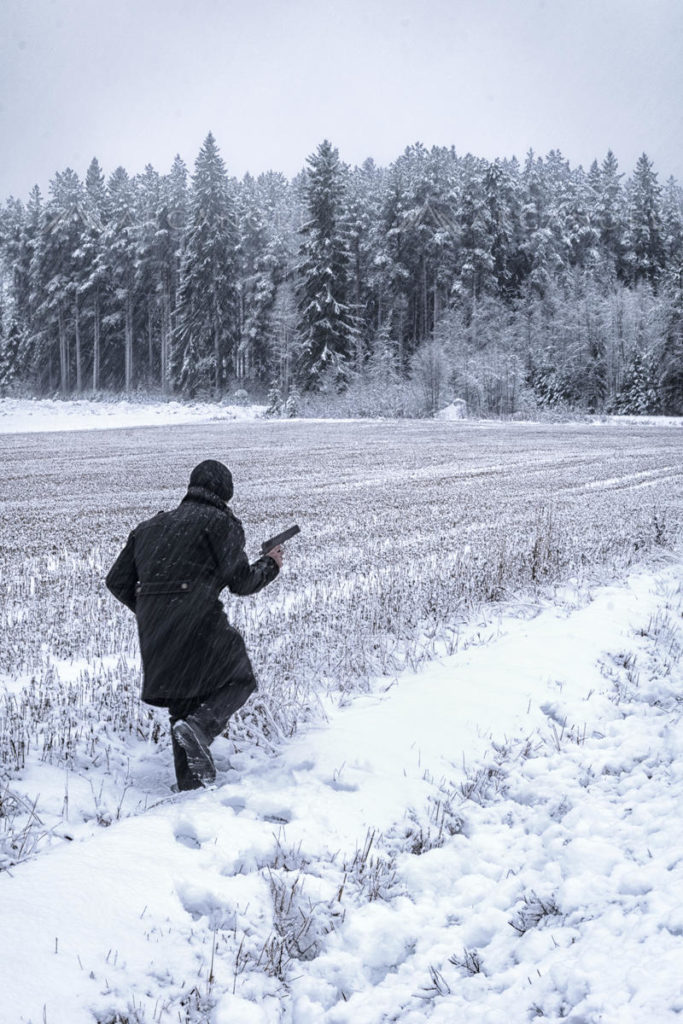
AA11238200 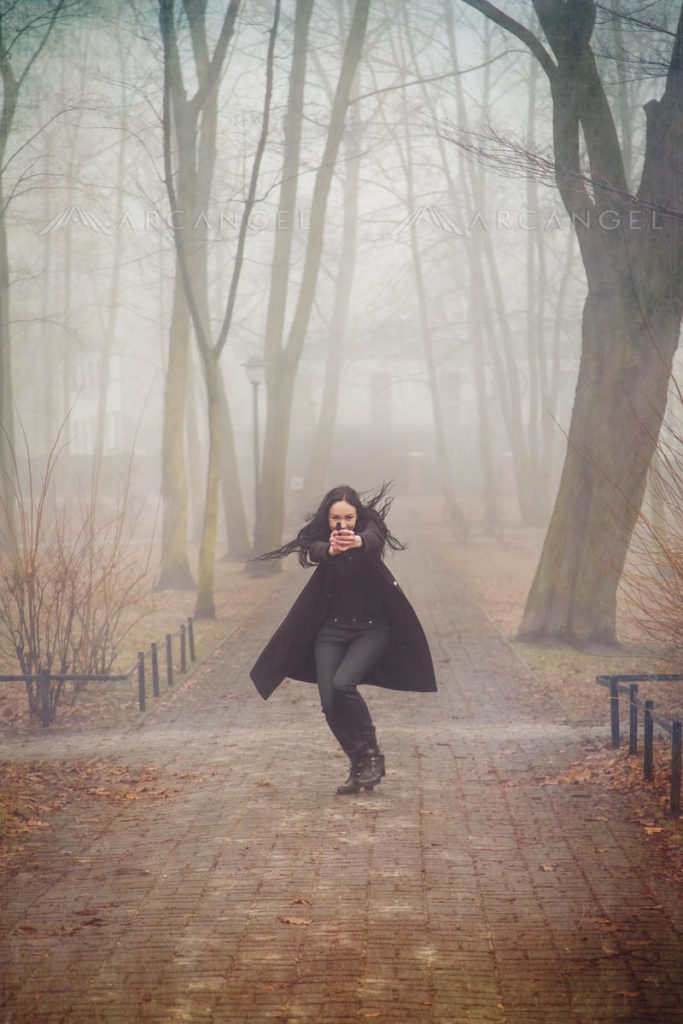
AA11239552
Here are some great examples of active poses. The photographic techniques used here make the images dynamic and given a strong sense of purpose to the characters.
Passive poses
A more passive pose, where the image depicts less immediate action, can also create intriguing narratives.
Perhaps someone has just picked up a gun for the first time and is handling it as a shocking, unfamiliar object. A weapon held at arm’s length by someone in ordinary clothes might suggest this.
At the opposite extreme, a character might be a contract killer, so accustomed to weapons that they carry them casually. For this type of character, the sense of danger has to come from the person themselves – not the weapon in their hand.
A passive pose could also suggest someone lying in wait, on guard, or going to meet their fate.
In these examples the gun might not be pointed at anyone, but the image still needs to create a sense that this character is choosing to carry a weapon for a purpose. Think about what those purposes might be, and make sure your model reflects that attitude.
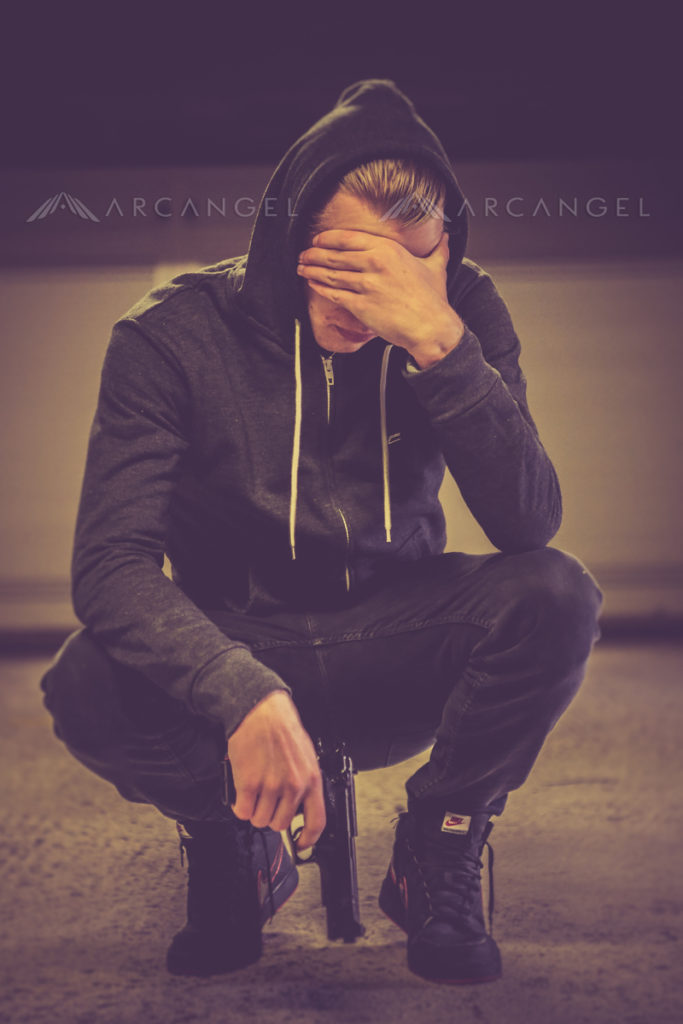
AA1181084 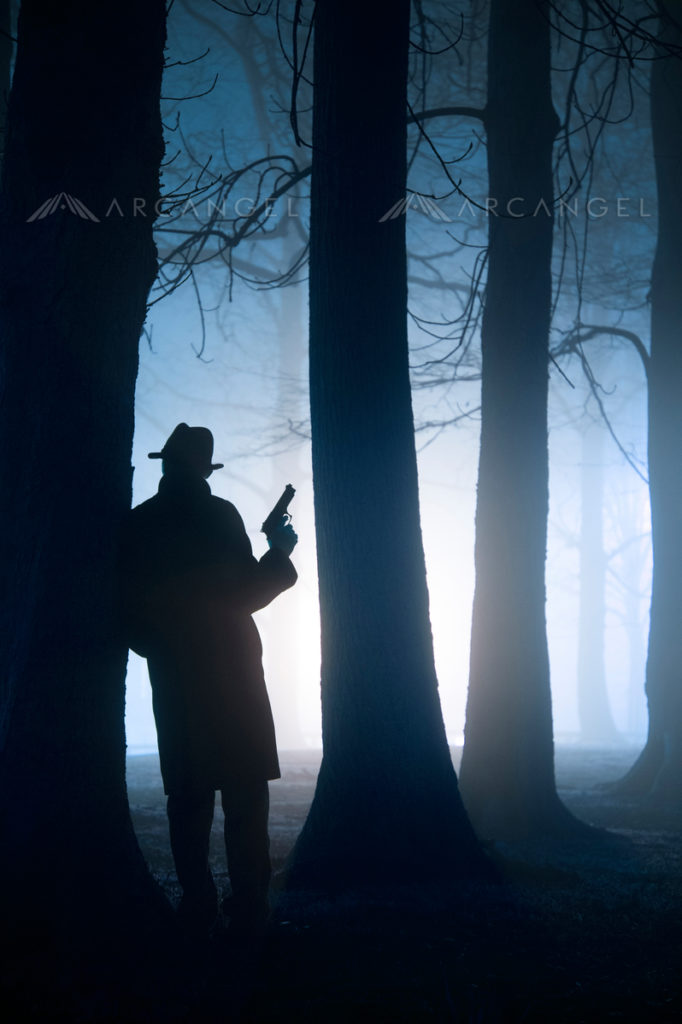
AA1191705 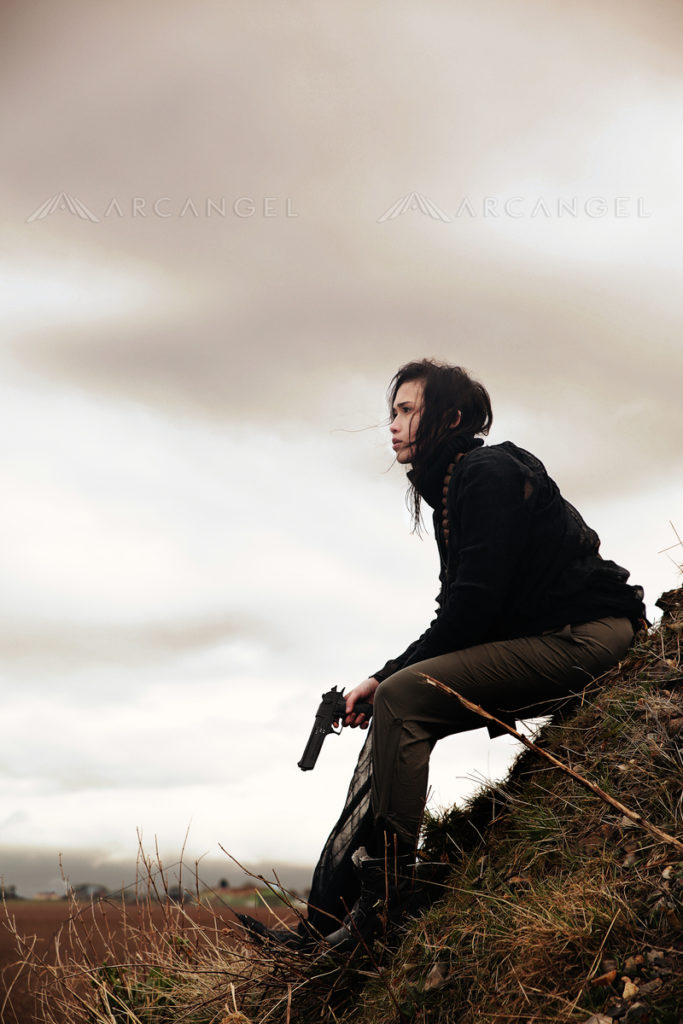
AA1326617 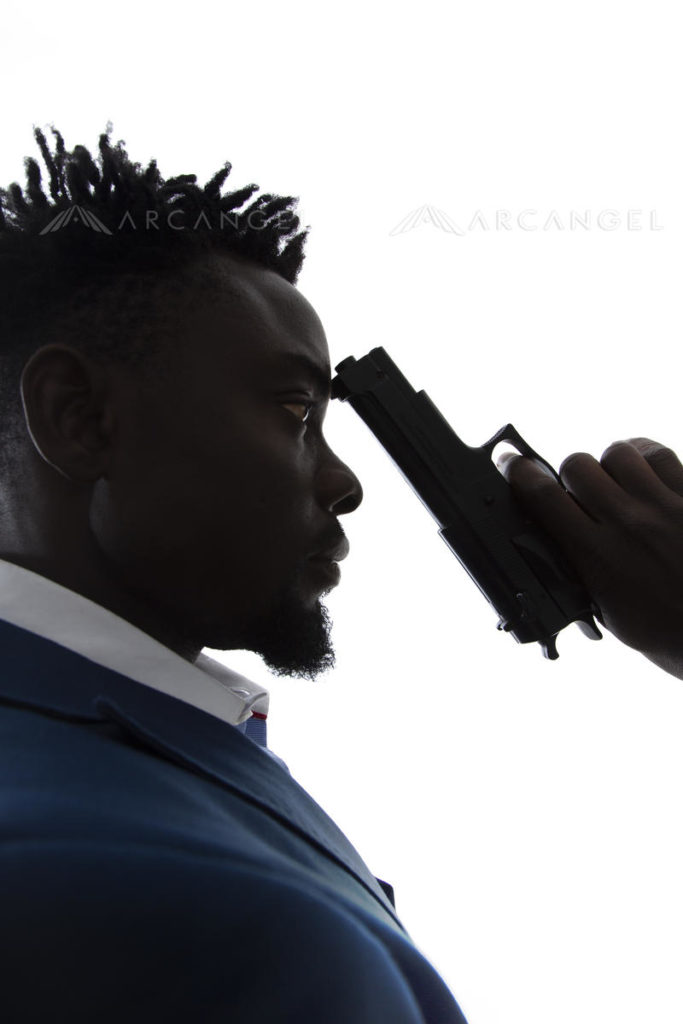
AA11327435 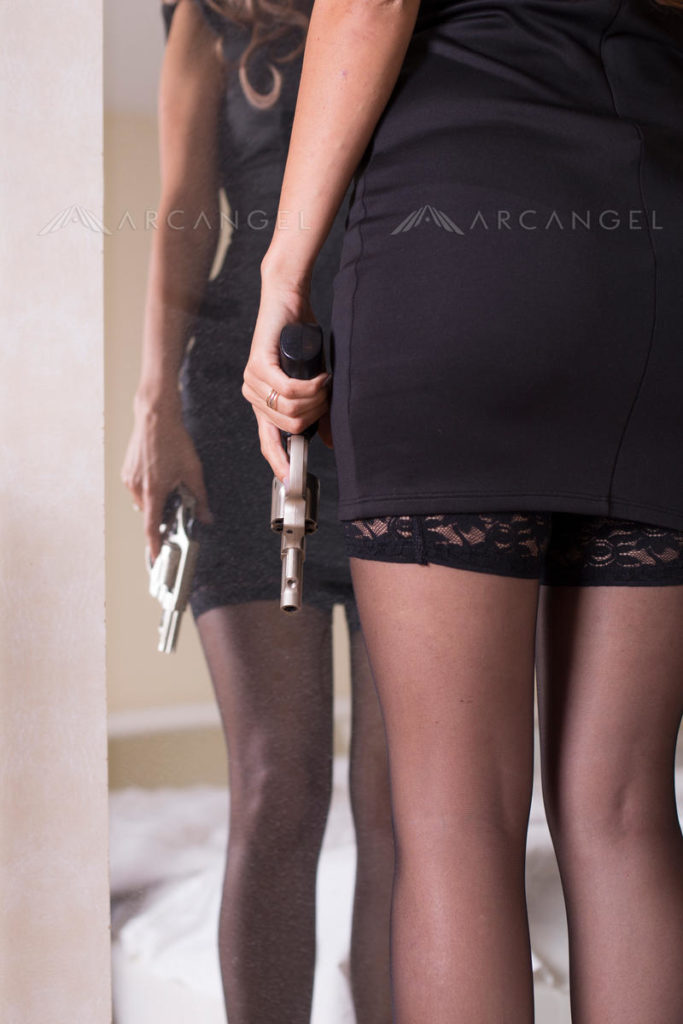
AA1862008 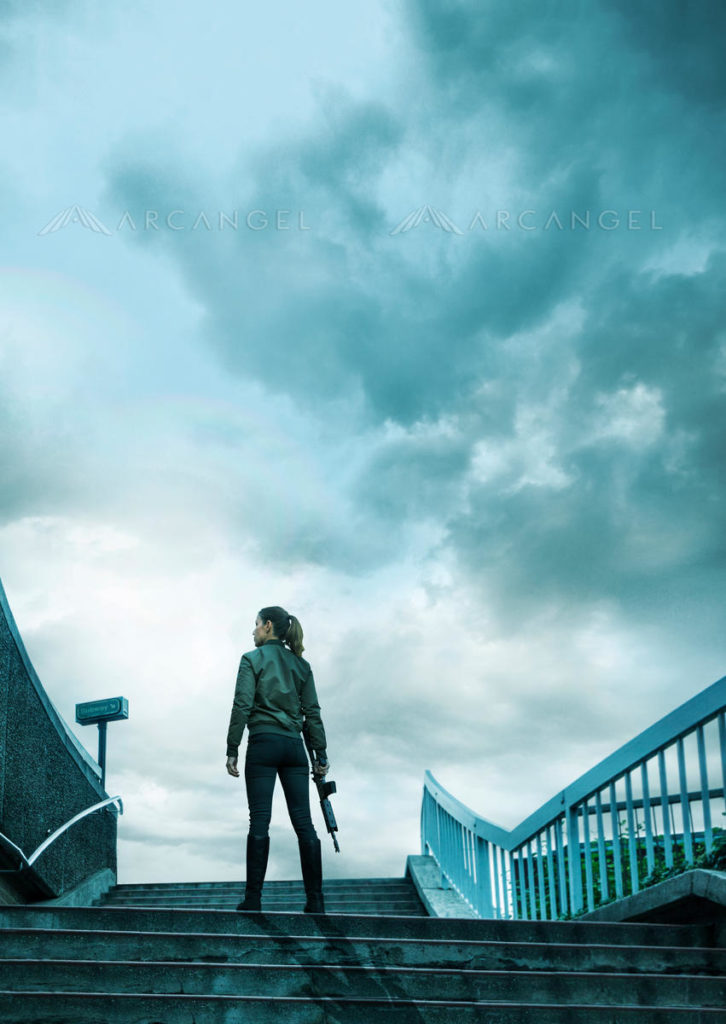
AA1901470 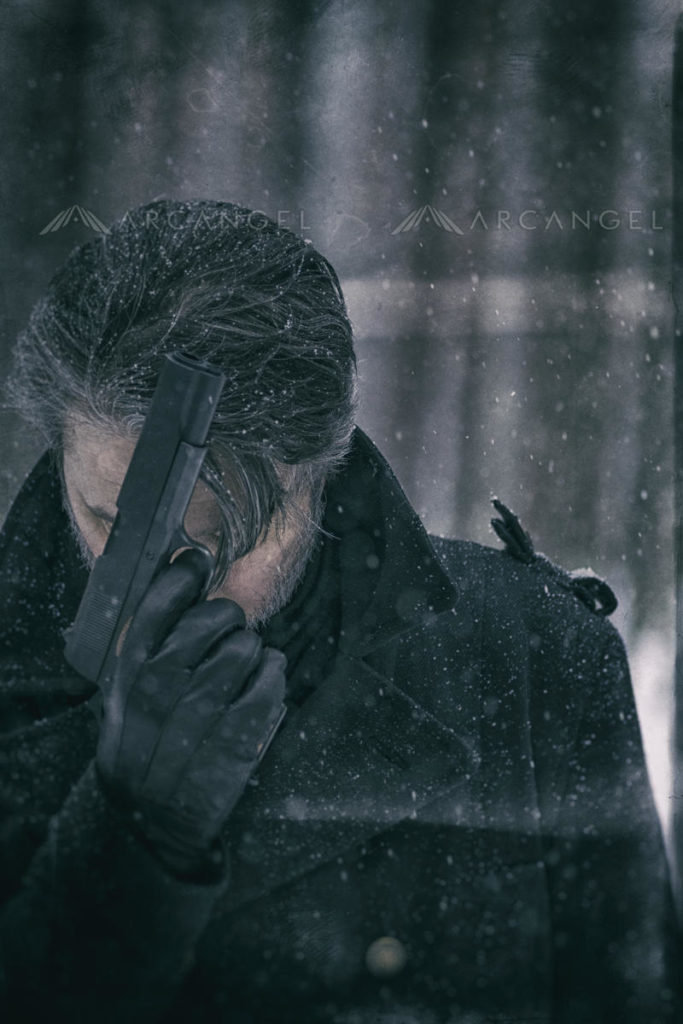
AA11259443 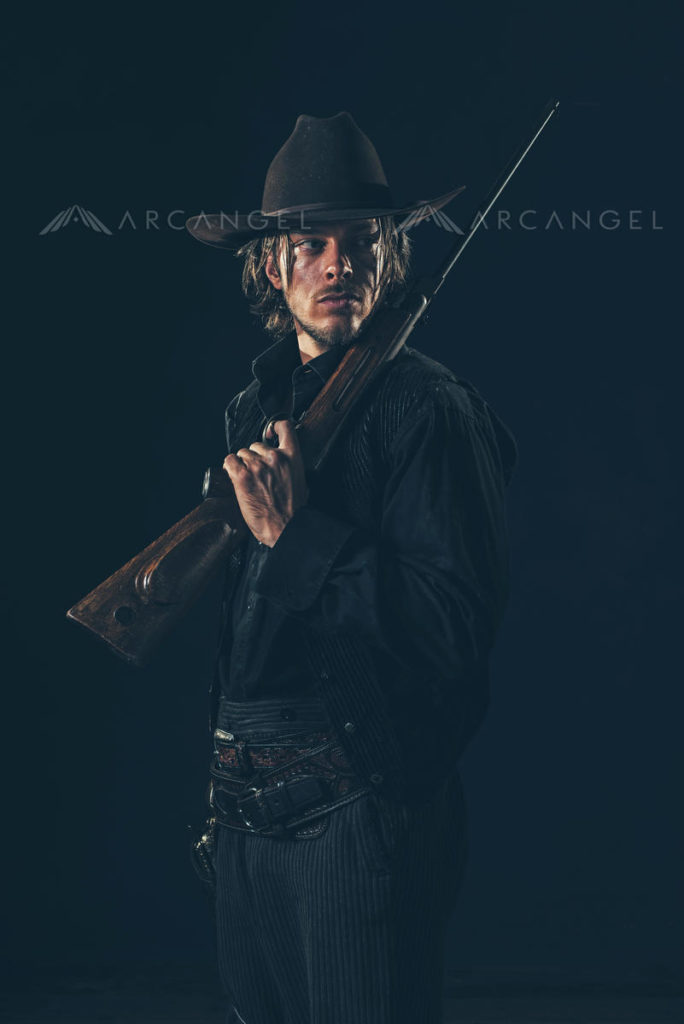
AA11306733
These images make very effective use of passive poses. Each of these images tells a story and suggests a very specific type of character.
2. Points of view and framing
In general, when carrying out a shoot we recommend you cover a variety of angles and frames, so that your work can fit with different design requirements.
Keep in mind the preset options in the Arcangel search filters. Having examples from a shoot in as many of these categories as possible means your images will be found in more searches, think about the way an Art Director, book cover designer or picture researcher will search for an image:

The most common requests for people with guns are for rear views, partially obscured faces, and looking over the shoulder. This allows the reader to identify with the character without being able to see too much of their face.
Full-length images are also frequently requested, especially if a figure is to be cut out and dropped into another background.
You may also want to try close ups, with a range of facial expressions and different emotions.
Above all – be creative! Tried and tested composition types work well, but an inventive angle or point of view can help your image stand out!
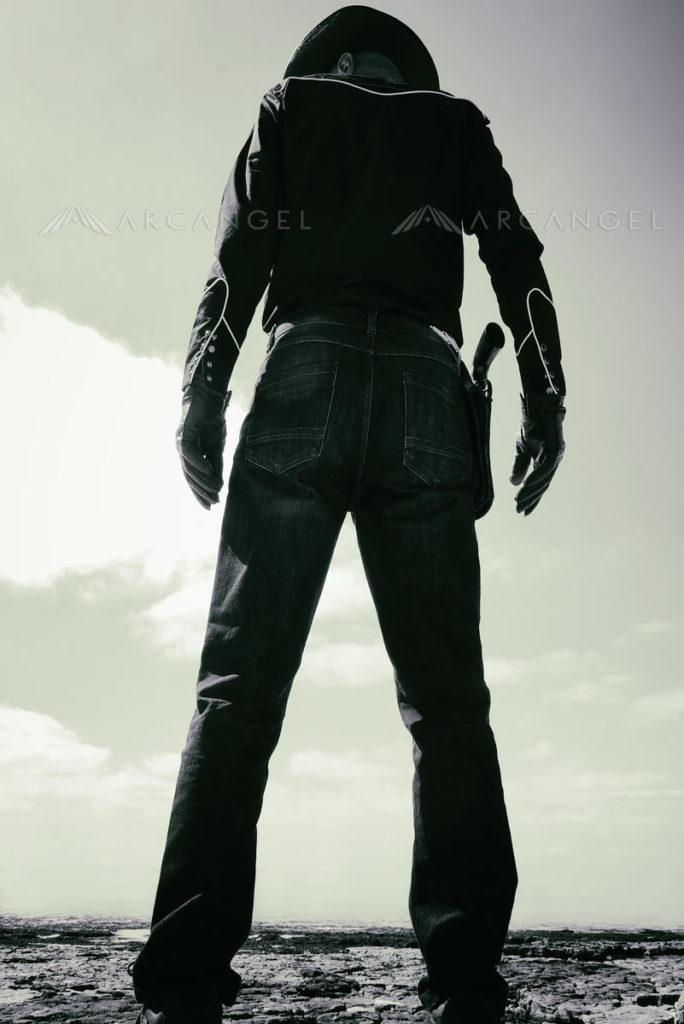
AA11075842 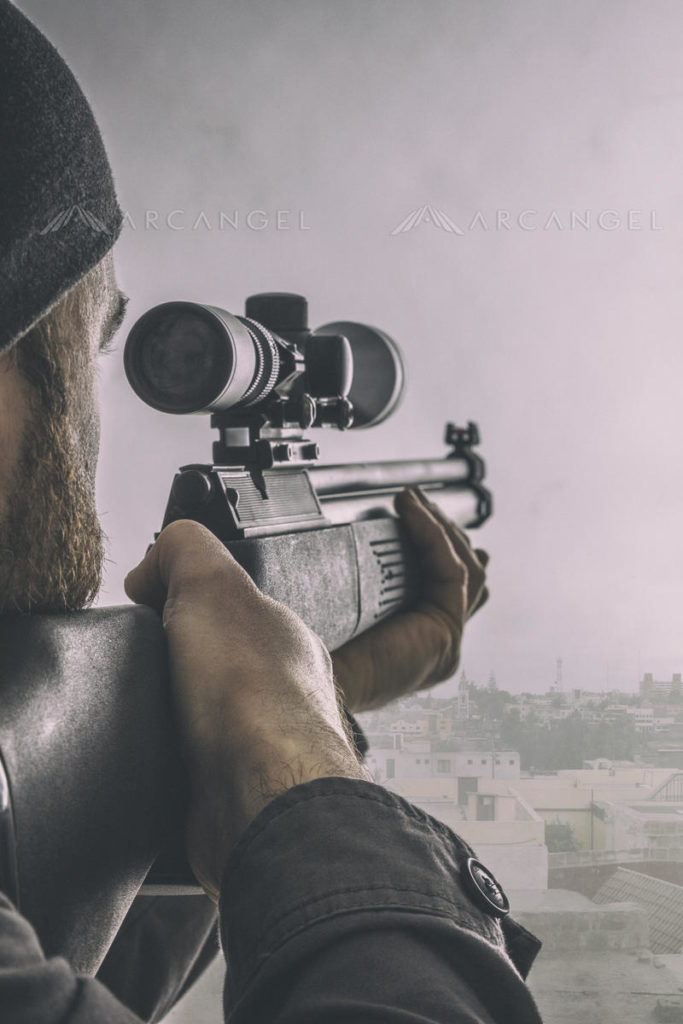
AA11222356 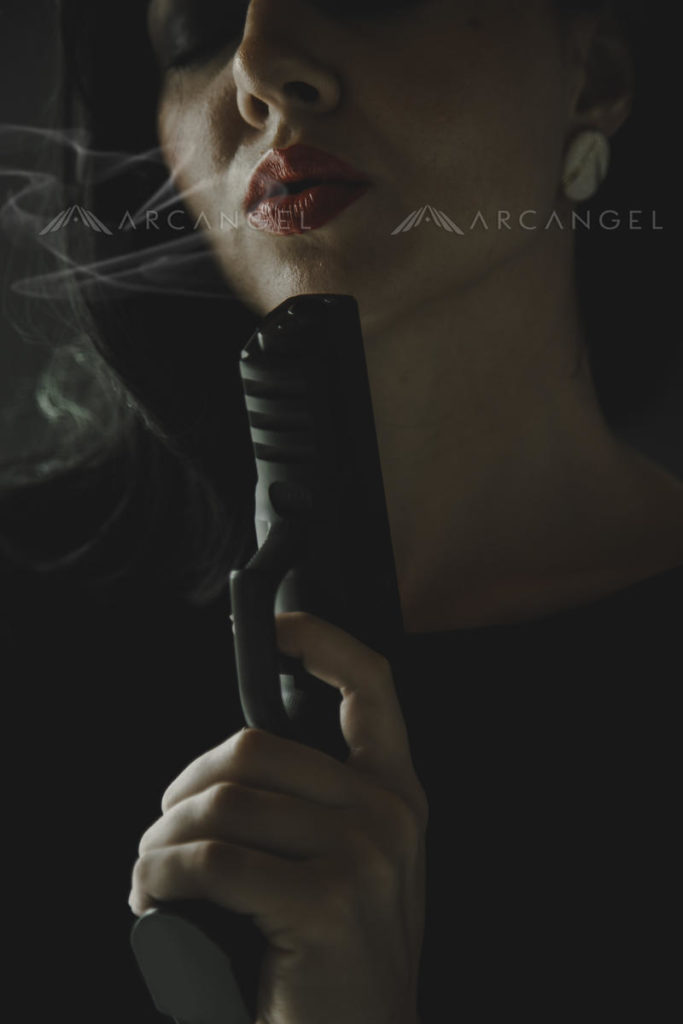
AA11262921 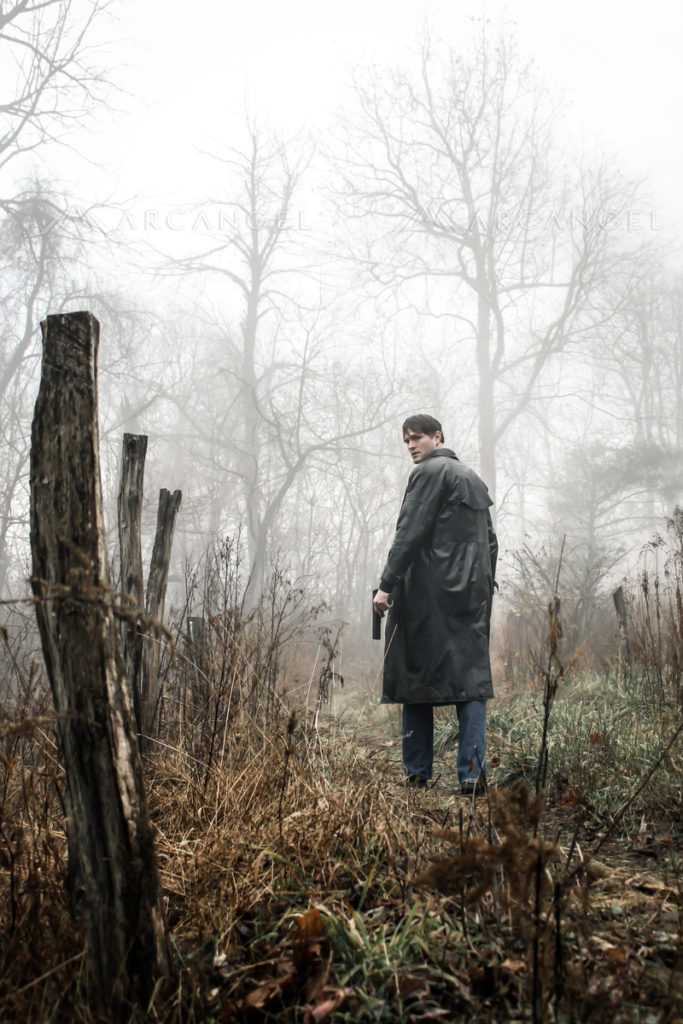
AA1658544 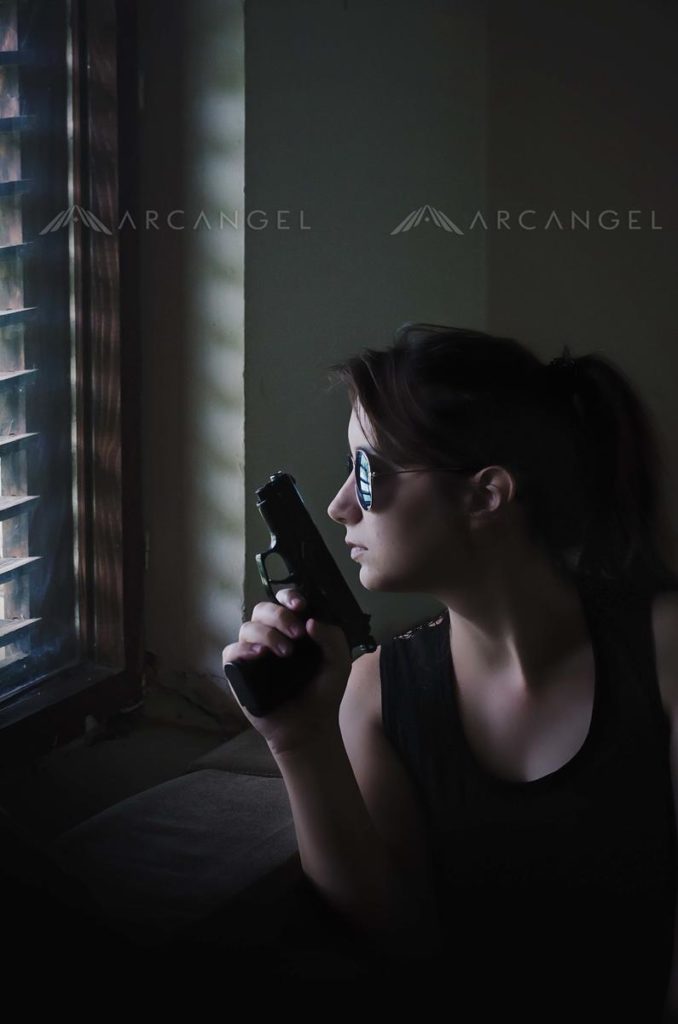
AA11350003 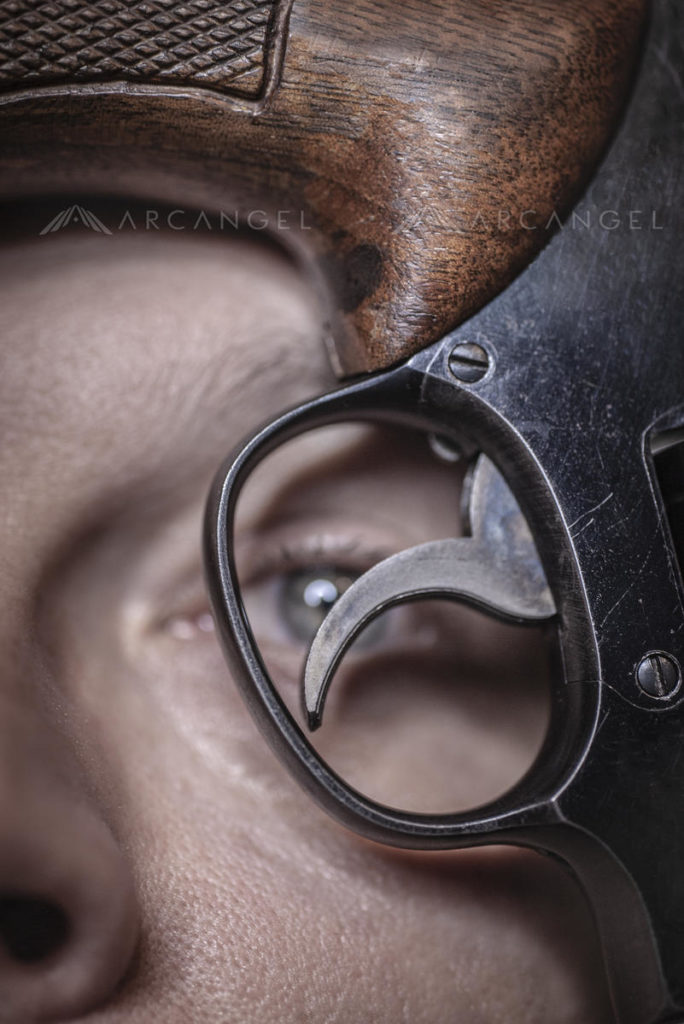
AA11362428 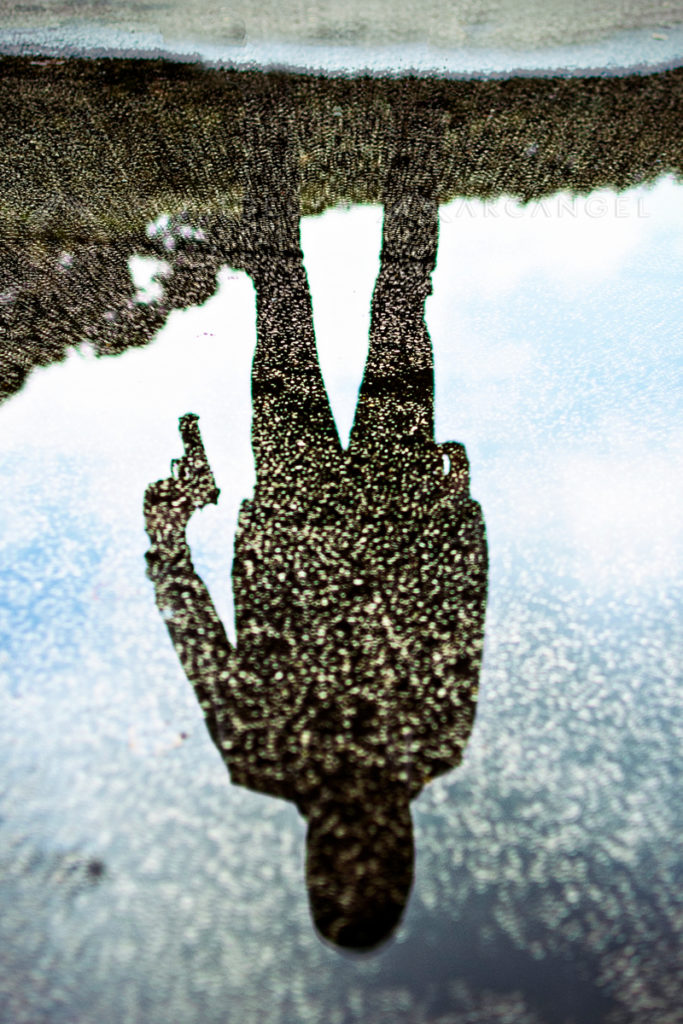
AA1413084 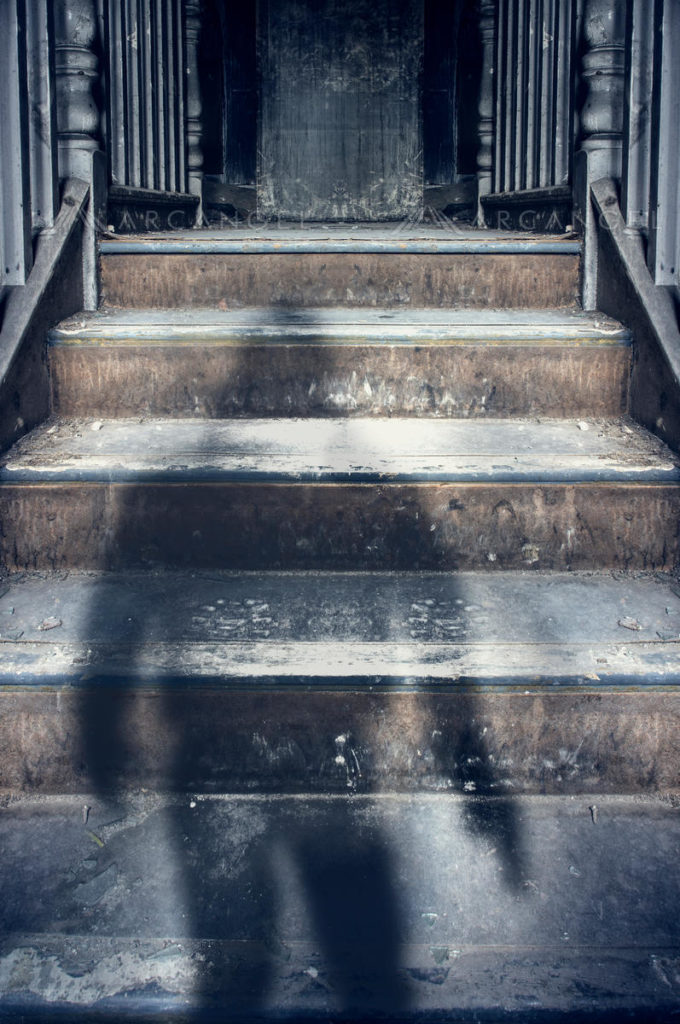
AA11039637
All these book cover images show a person with a gun, but with inventive and eye-catching takes on framing and composition.
3. Costumes
People using guns can feature in a huge range of fiction genres. Contemporary thrillers are the most obvious but these techniques could also apply to historical fiction, post-apocalyptic sci fi, political intrigue, cyberpunk, psychological thrillers, and more.
Here are some costume types that our clients ask for on a regular basis:
- James Bond-style ball gowns and tuxedos;
- Gangsters, mobsters and mafiosi – both period and contemporary
- Classic detective noir with trench coats
- The ‘everyday hero’ in simple jeans and a shirt or t-shirt
- The ‘tough guy/girl’ in leather jackets or biker-style gear
- Government or corporate agents in suits
- Specific uniformed characters as cops and soldiers, — both period and contemporary
Keep in mind that detail shots of outfits can also be very powerful!
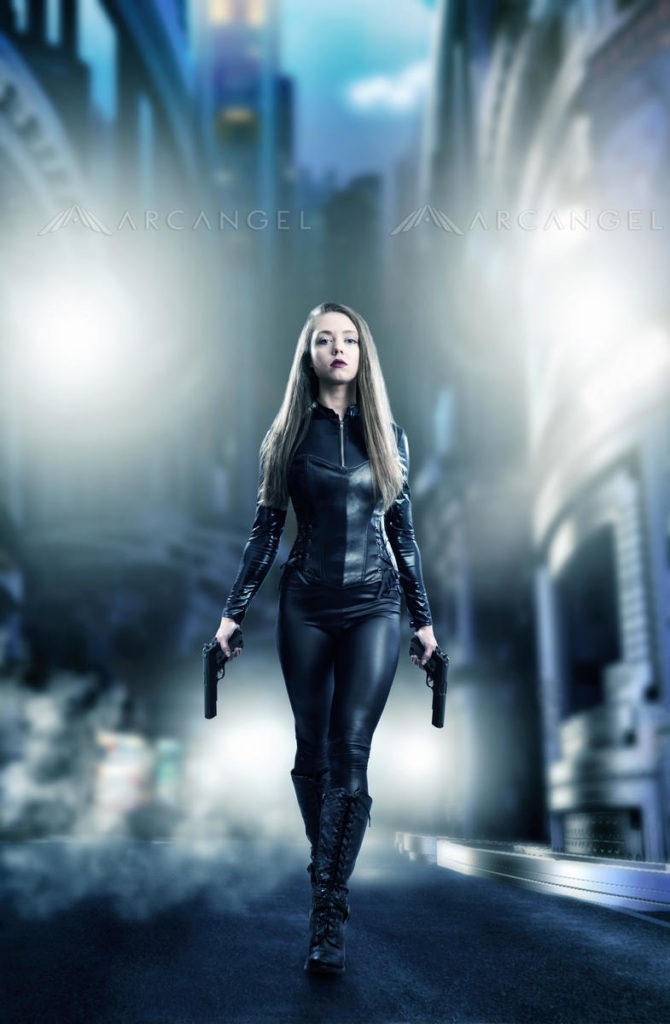
AA11042715 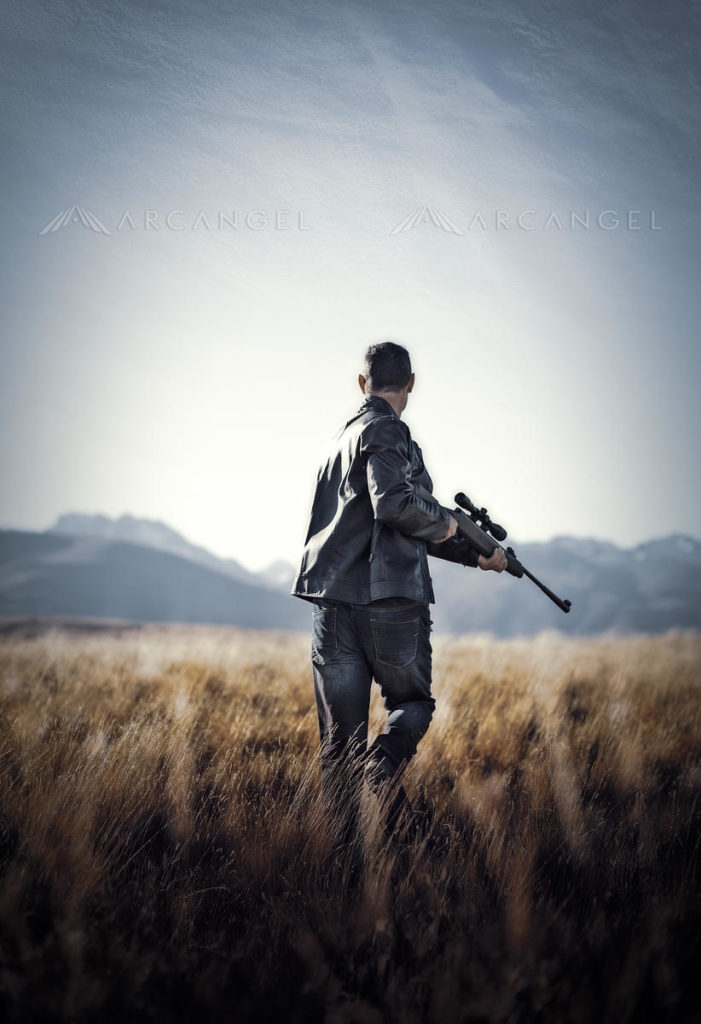
AA11319016 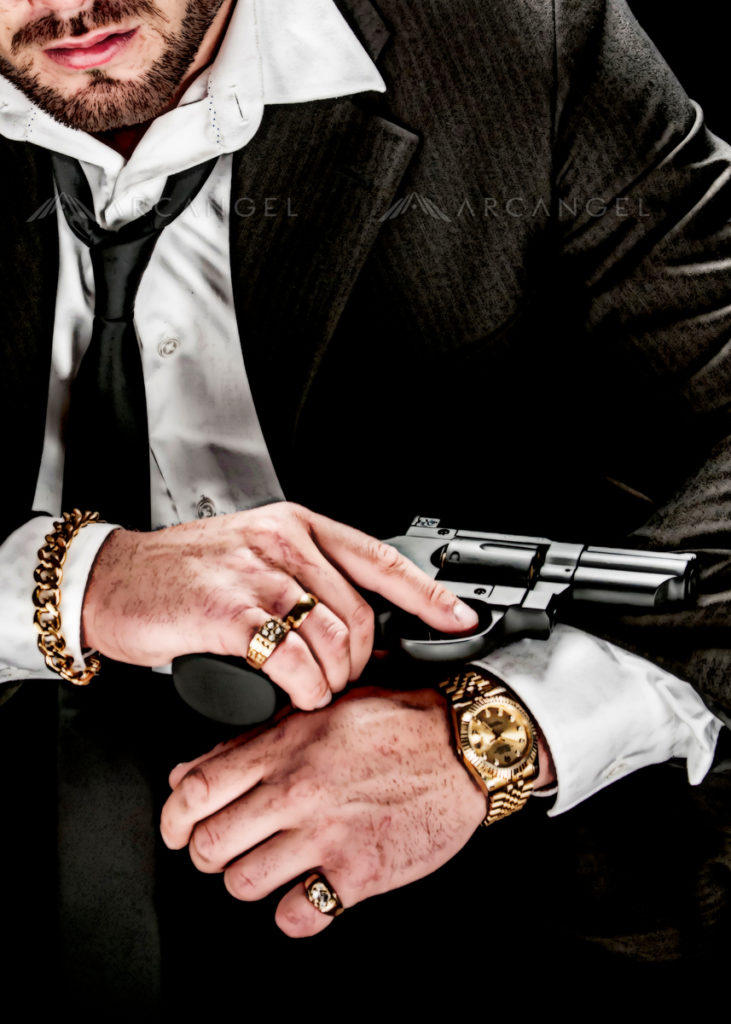
AA1405136 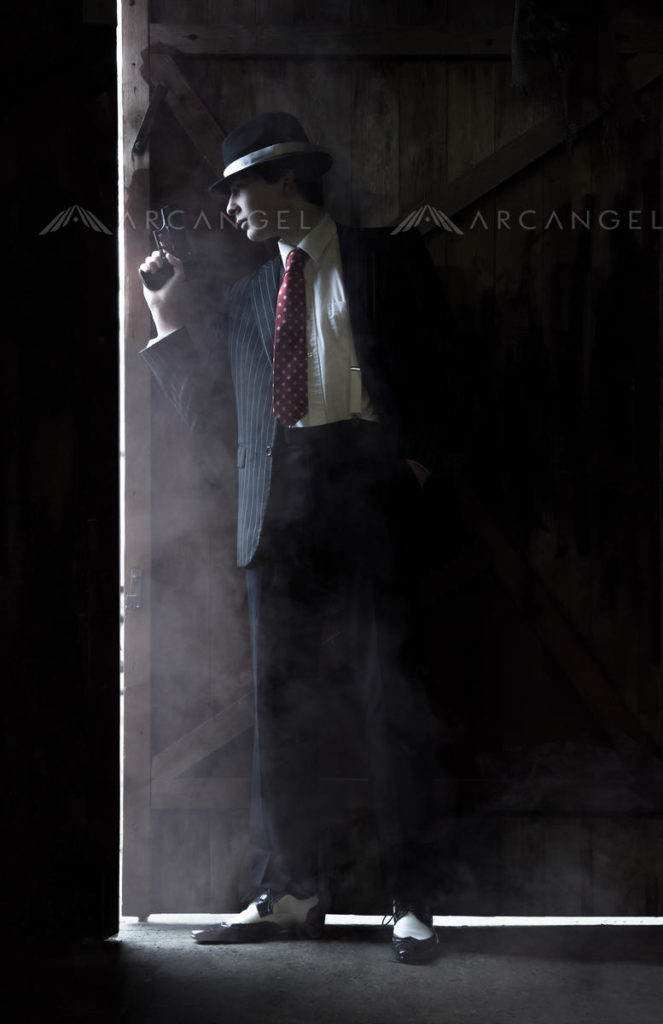
AA1956406 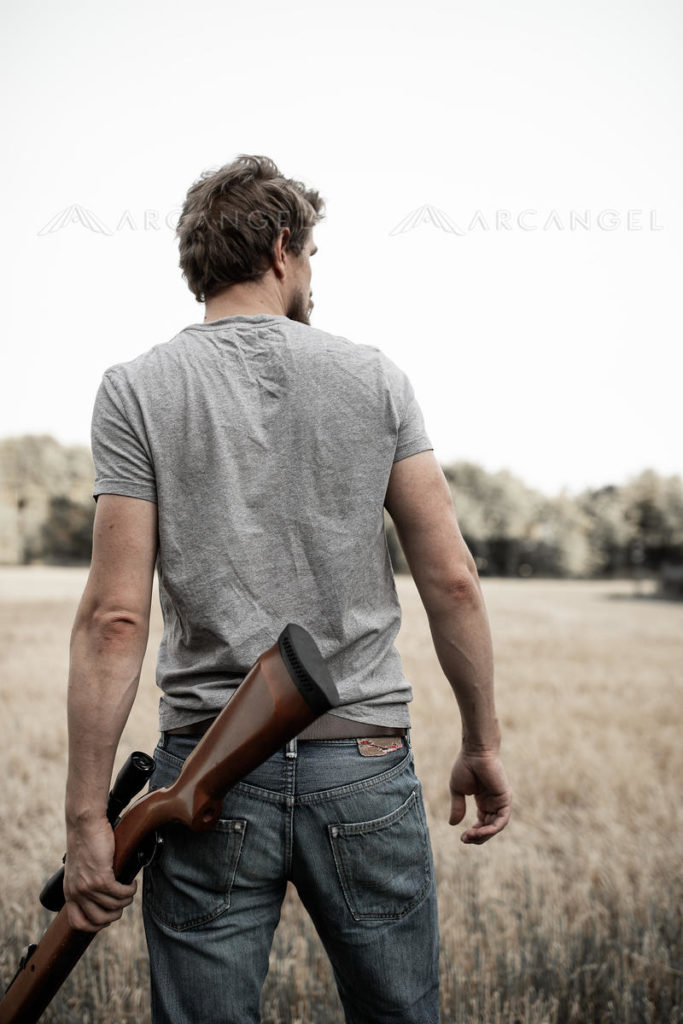
AA11103139 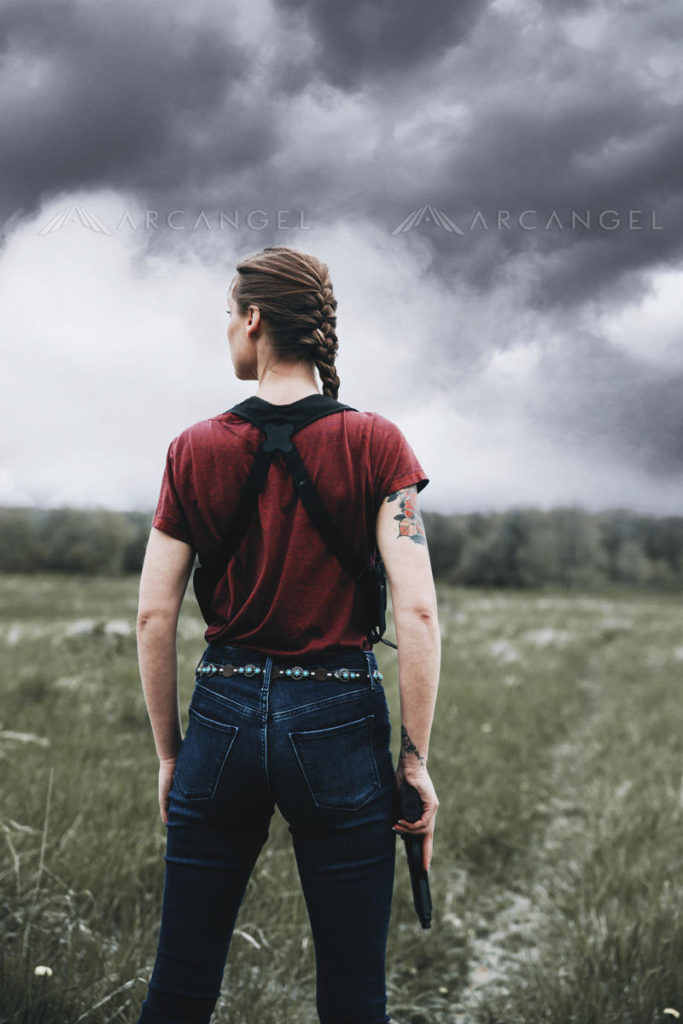
AA11329375 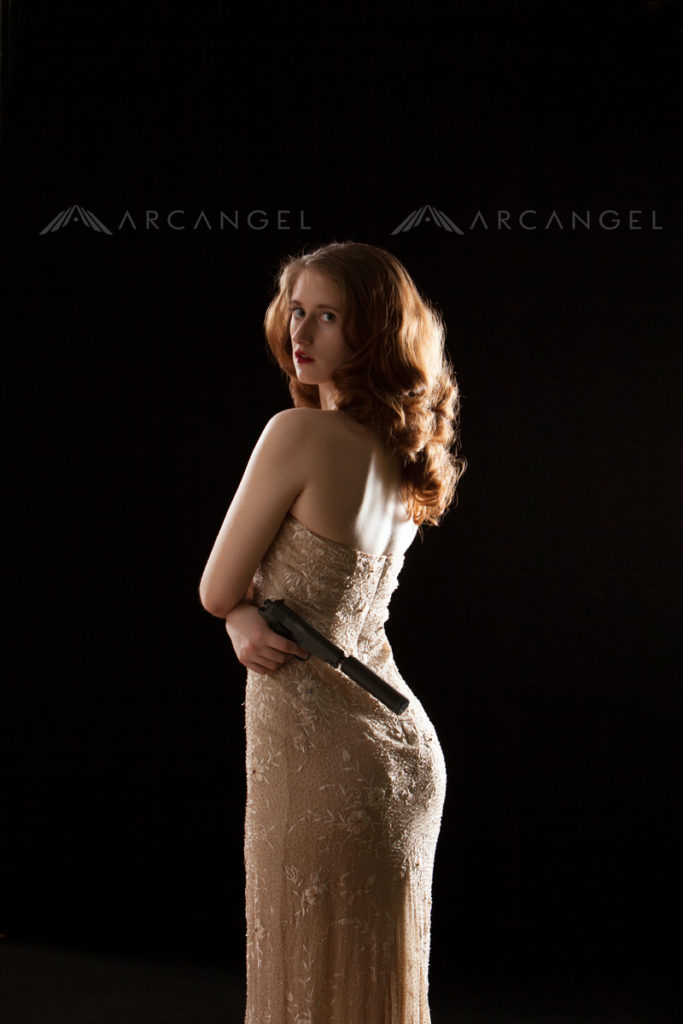
AA1702931 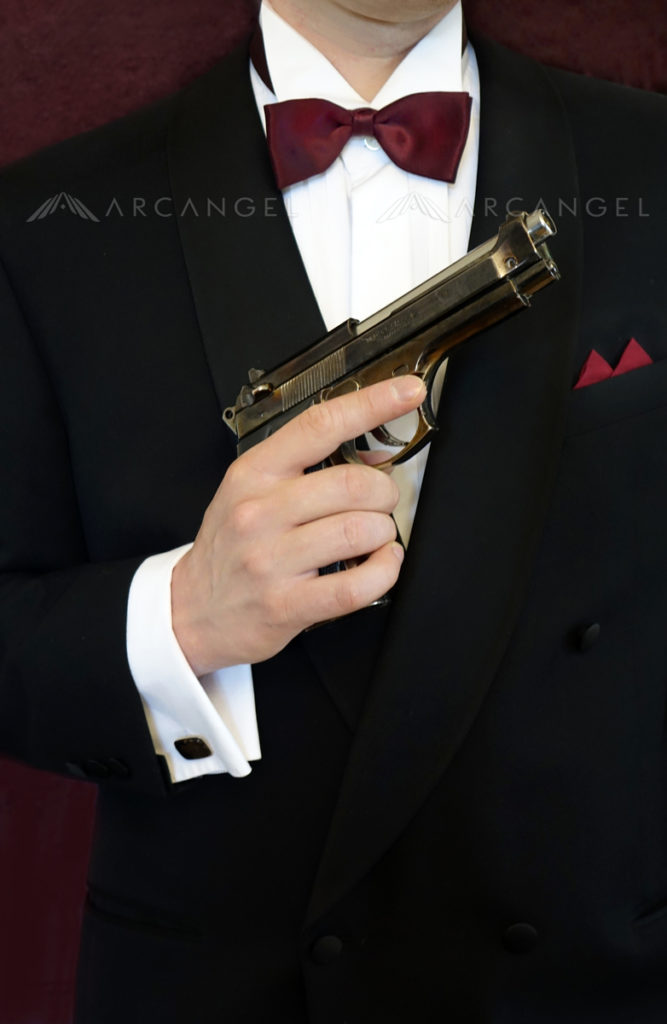
AA1586917 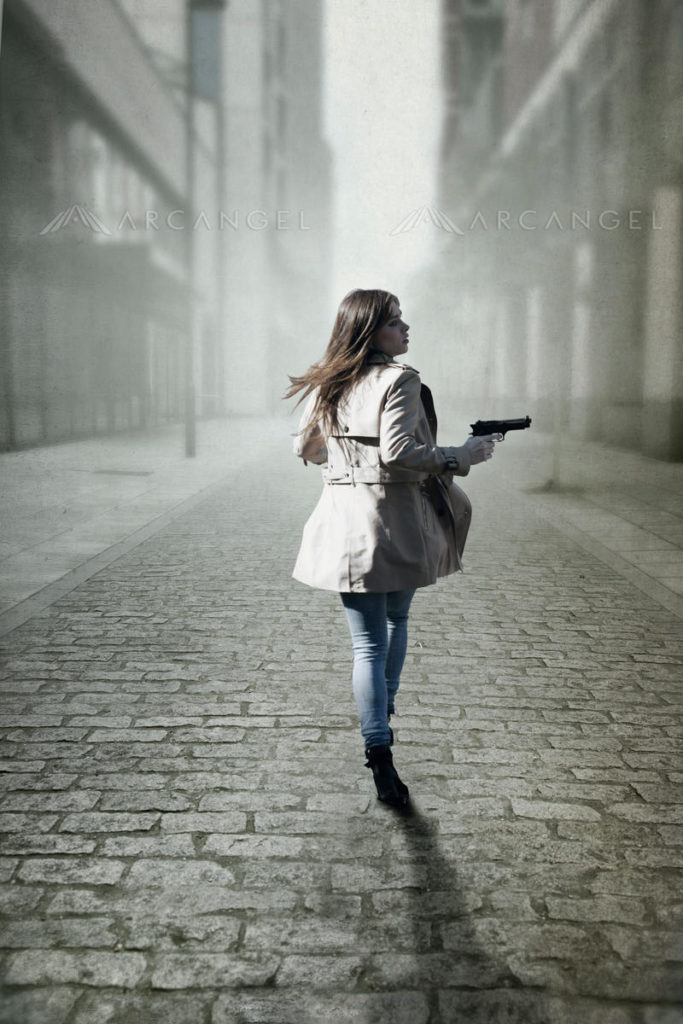
AA1944377 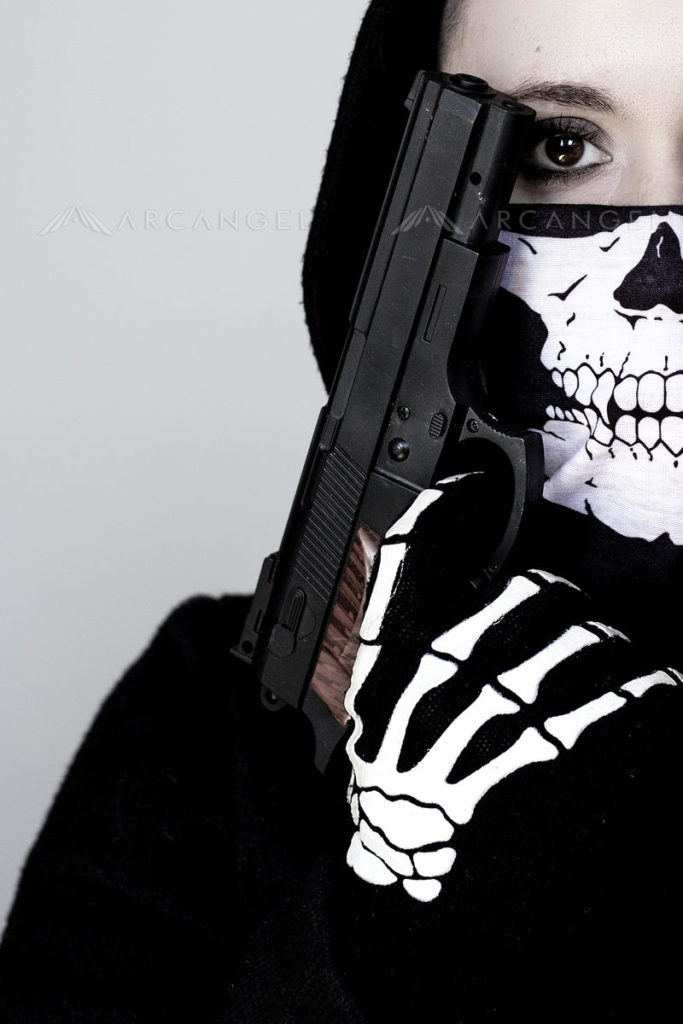
AA11010898 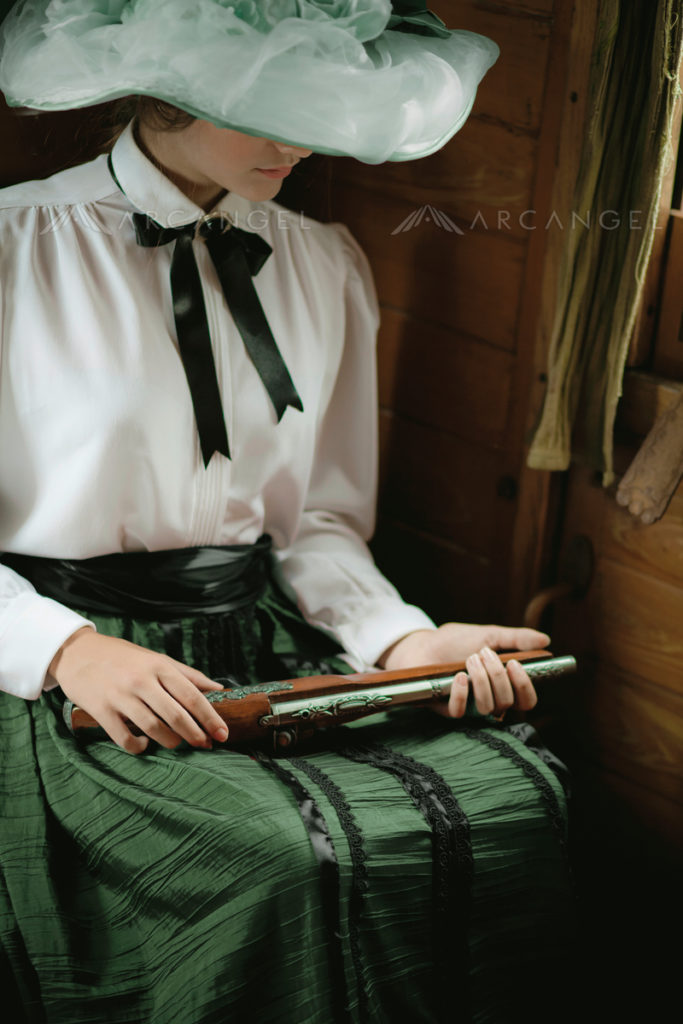
AA1667314 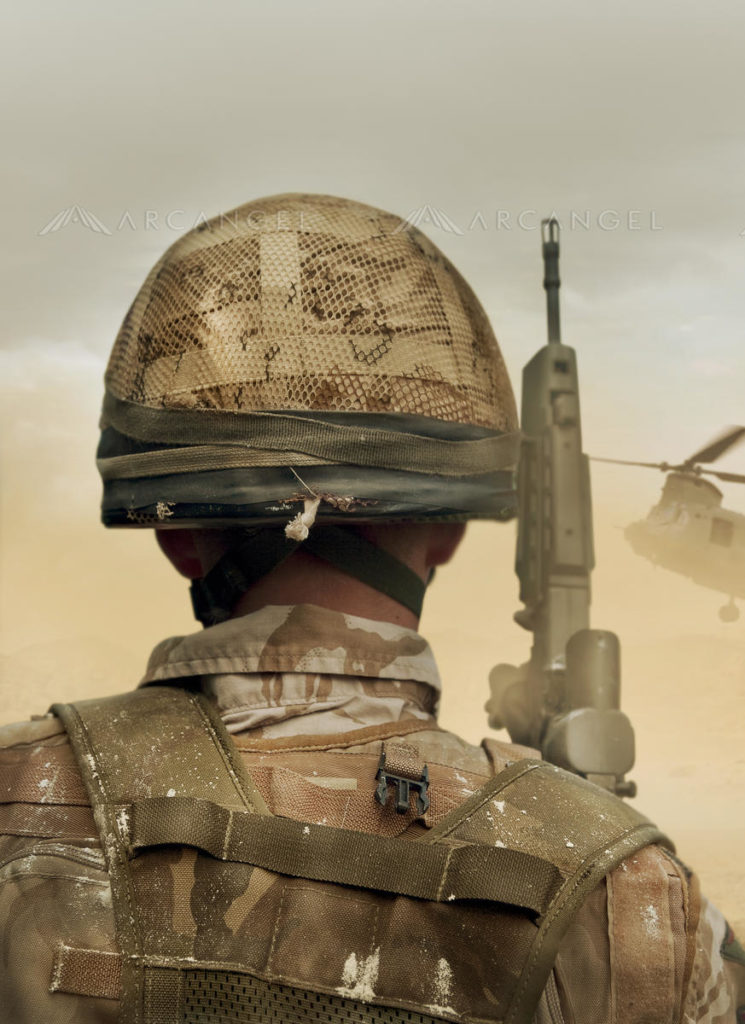
AA11256323
Different costume styles are used very effectively in all of these images. The outfits play a major role in establishing the genre and character type.
5. Settings & Locations
The location or setting you create for your images should match your character and complement their costumes and accessories.
If you’ve created a classy character in a suit or ball gown, for example, it’s most effective to place them in an equally classy setting – a hotel corridor, a bar, a balcony, a luxury car…
An unexpected or contrasting combination of costume and location might be eye-catching, but it’s unlikely to fit a narrative scenario. This will limit the potential for the image to be used in cover designs.
Exotic locations aren’t always necessary by any means – you can also shoot creatively at home. Domestic thrillers are a very popular genre, and often involve a seemingly safe place becoming a source of danger.
If you’re working in a studio, meanwhile, playing with lights, colours and shadows can give any character a sense of mystery or danger.
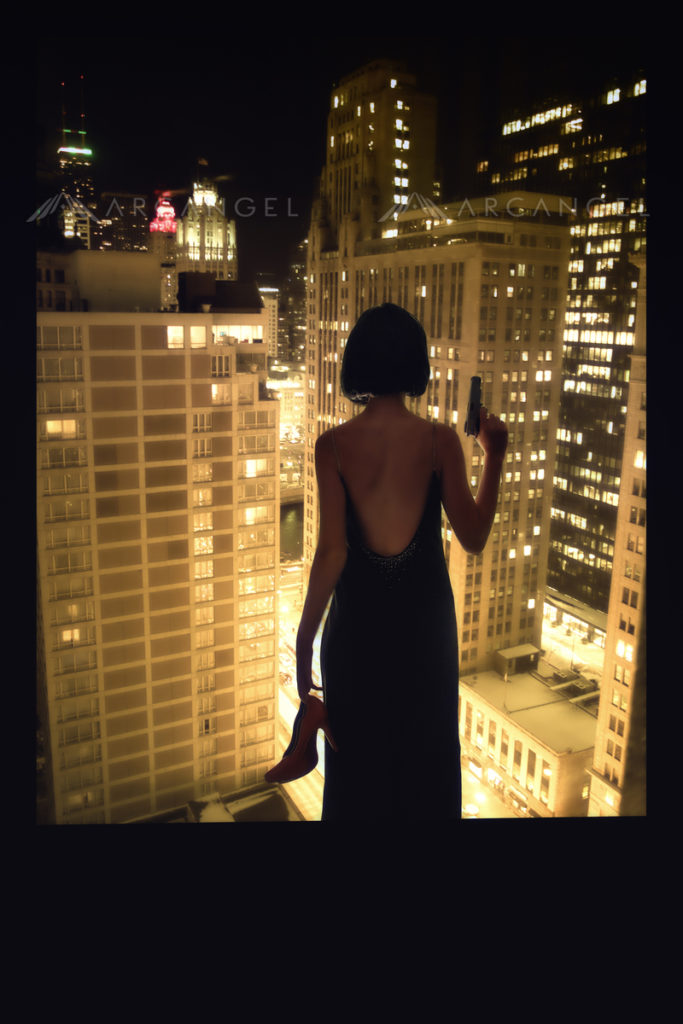
AA1246525 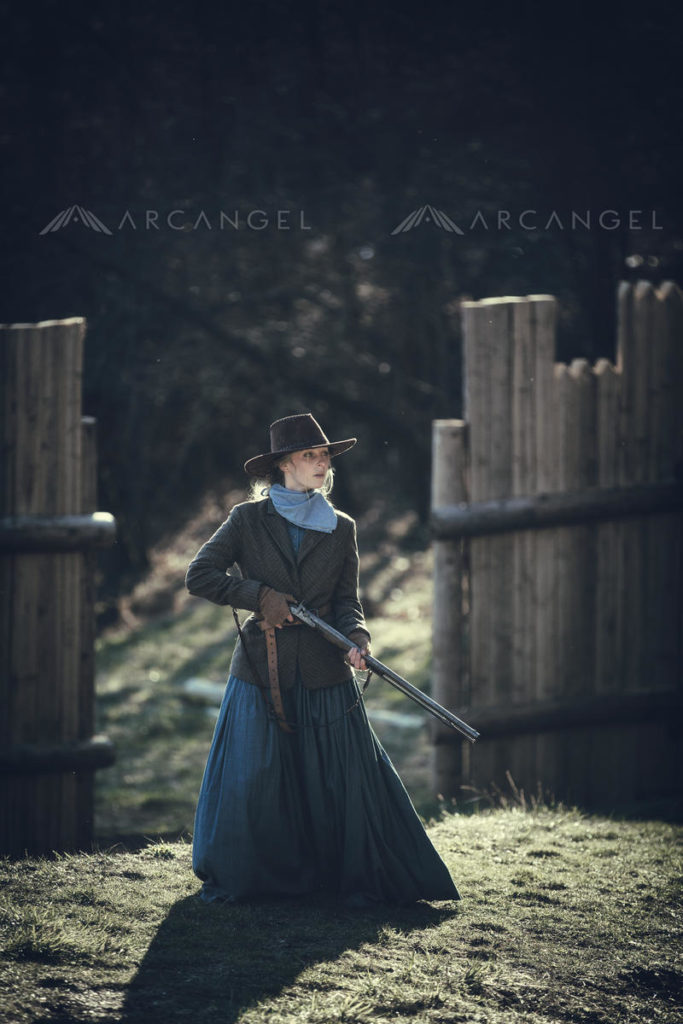
AA11283734 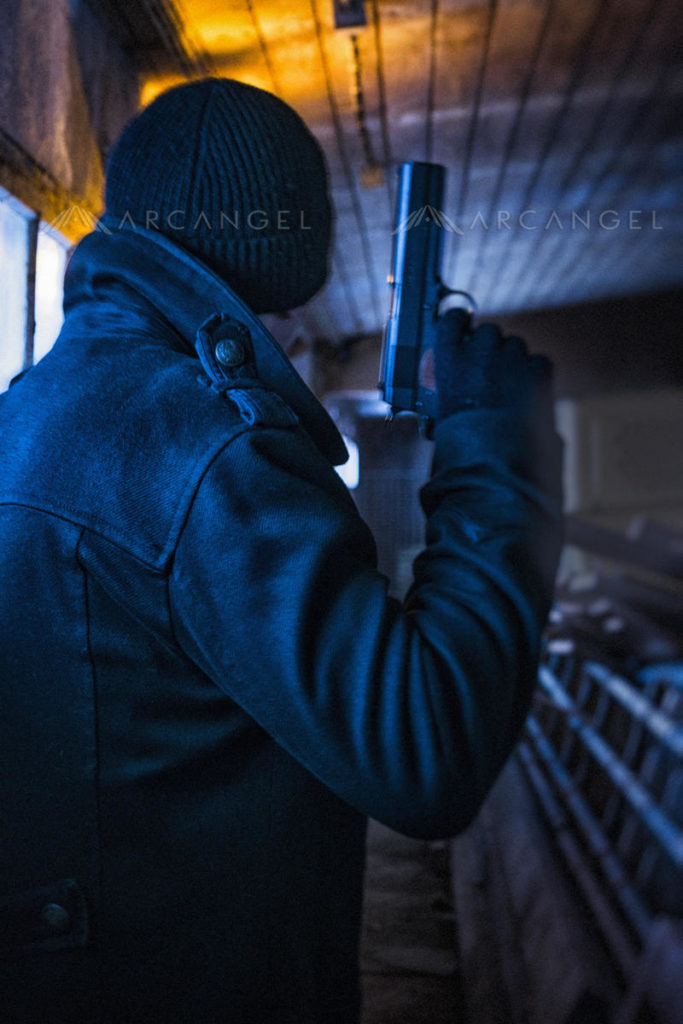
AA11245683 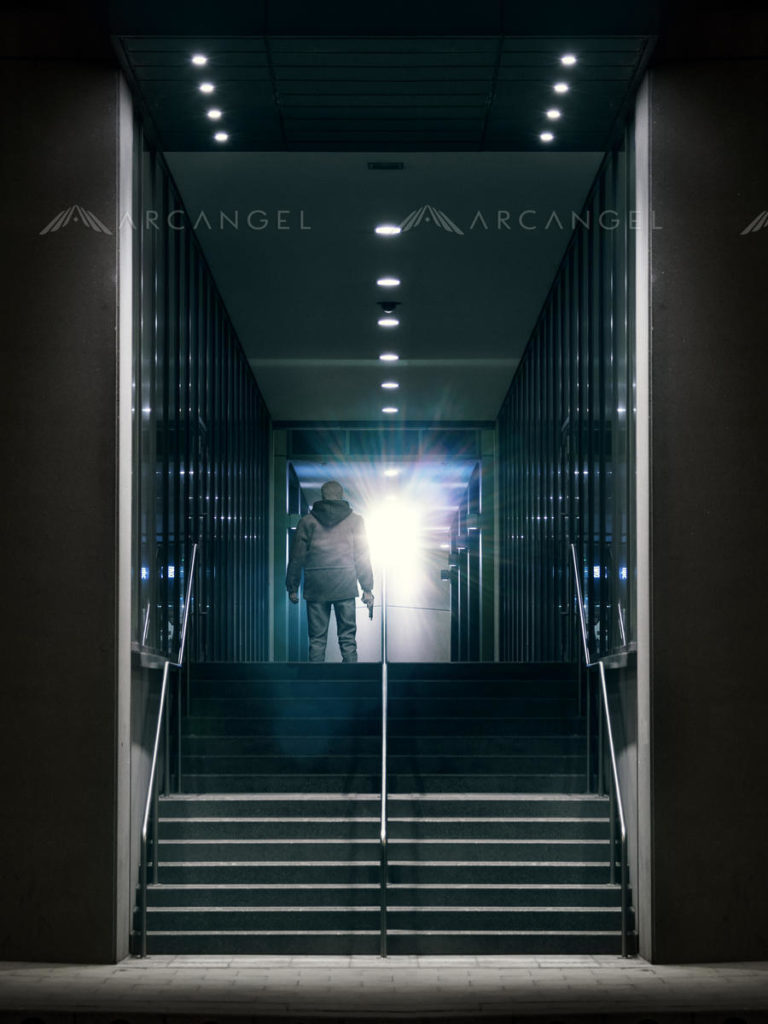
AA11048274 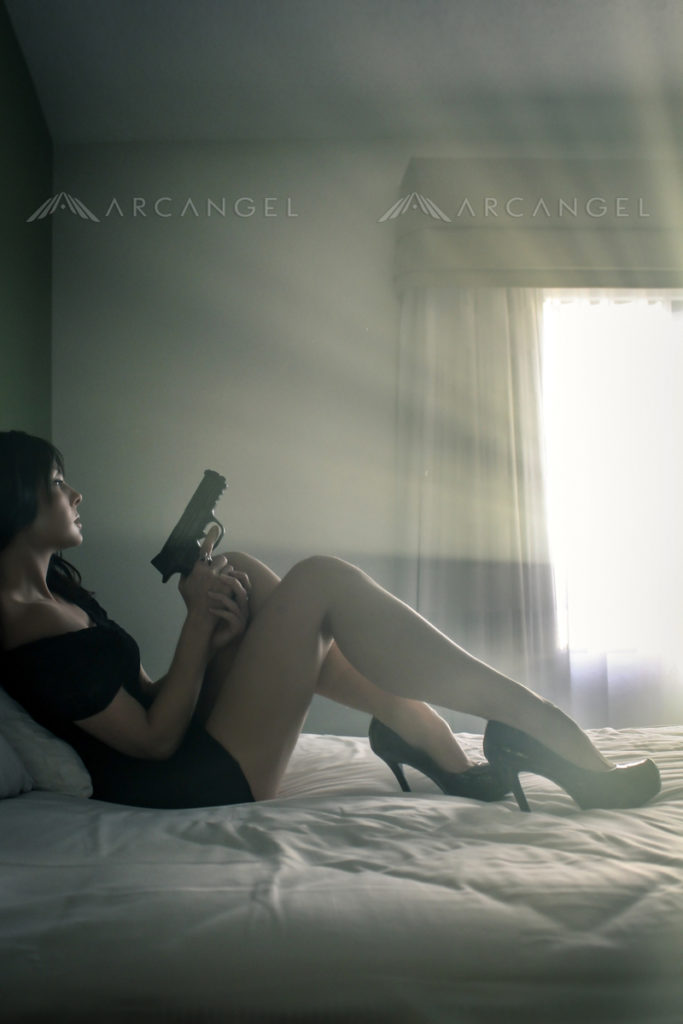
AA1251412 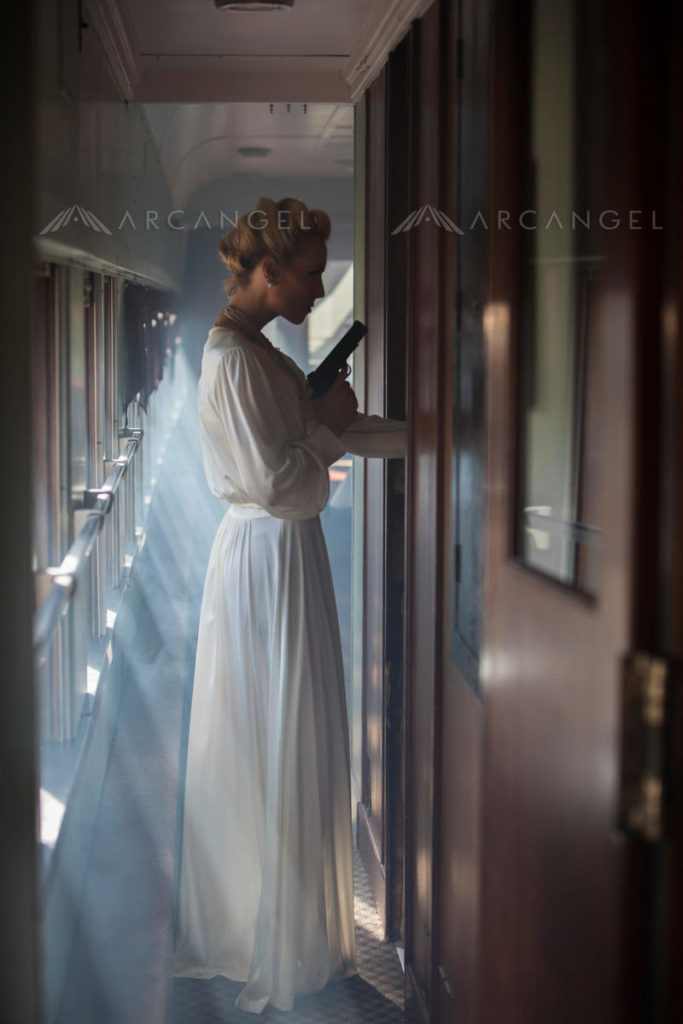
AA1926627 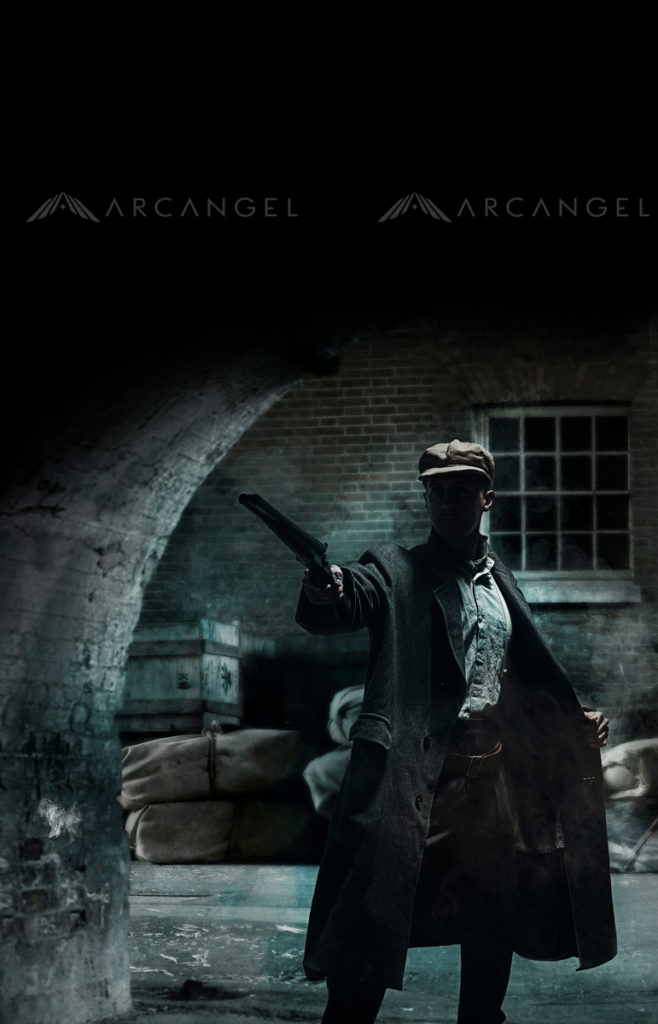
AA1458000 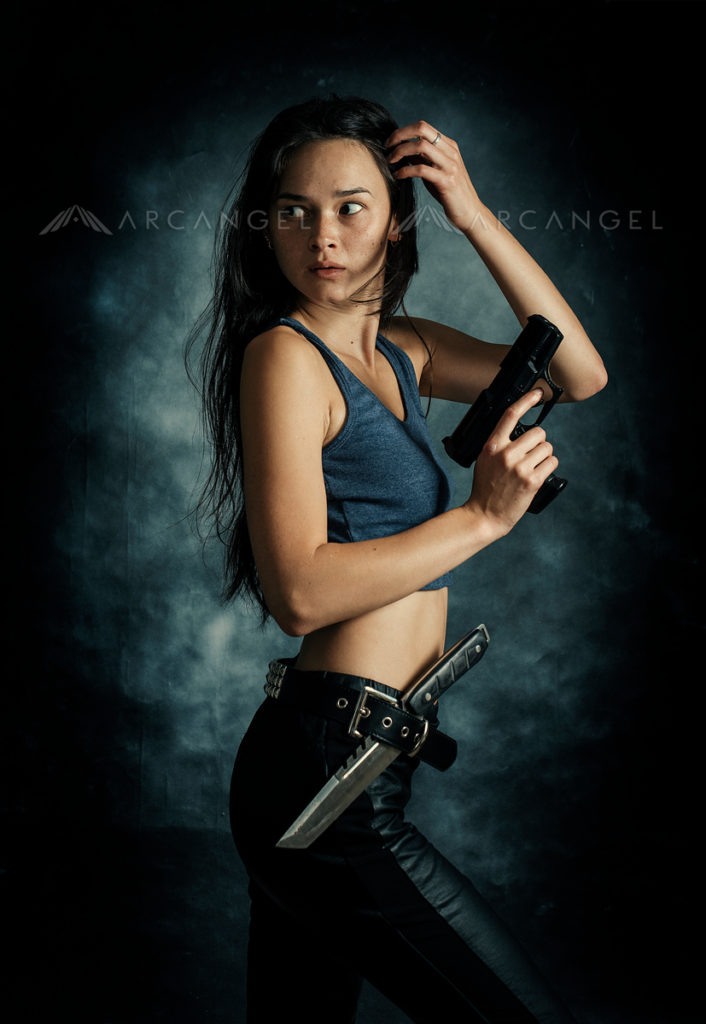
AA1829706
Character and setting complement each other perfectly in these examples, including studio shots and easily accessible home locations.
4. Filters & Techniques
Keep in mind that book cover designers request all types of images, both with and without filters.
For thriller covers, designers tend to use gritty and strong filters when guns are involved. In order to enhance the contrast of the images, vivid colors are often highlighted alongside deep shadows.
However, for more ‘high end’ thriller titles there is also demand for a high definition look, where you can see the pores of the skin, dust on clothes, or the sheen of a silky gown.
Misty and hazy effects are also frequently used, and can create an atmospheric sense of mystery or gloom. This can obviously be very relevant to crime and detective fiction.
More recent trends include technological glitch effects, such as images from a TV screen, suggesting surveillance and gadgetry.
Double exposures using complementary colors or two different scenes are another recent design trend.
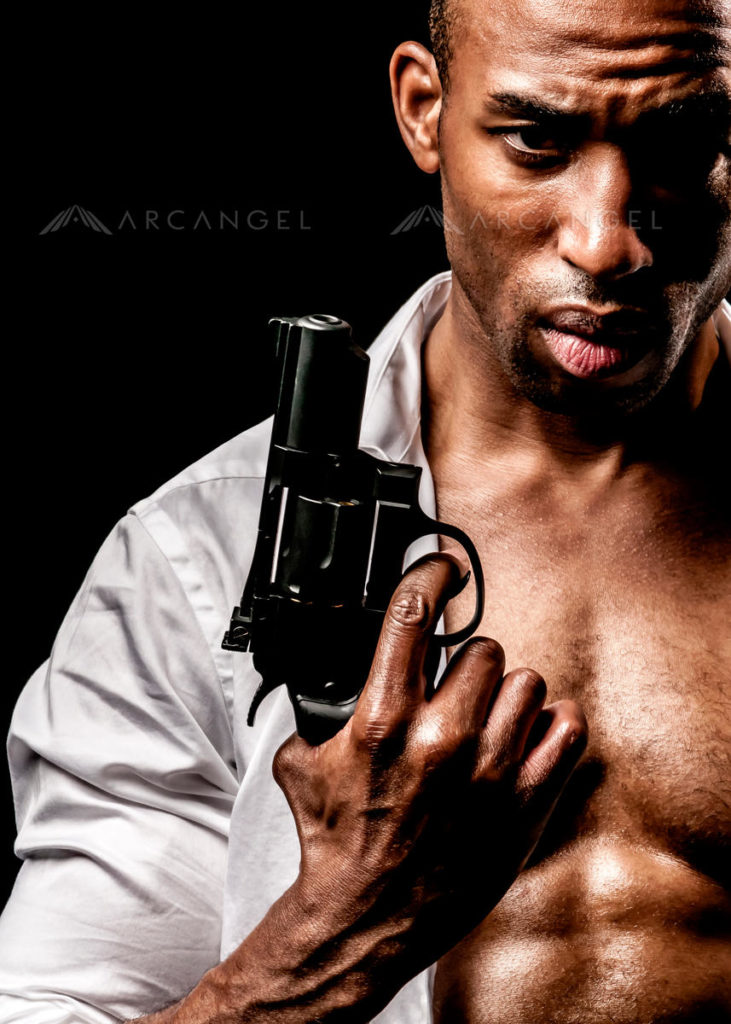
AA1925888 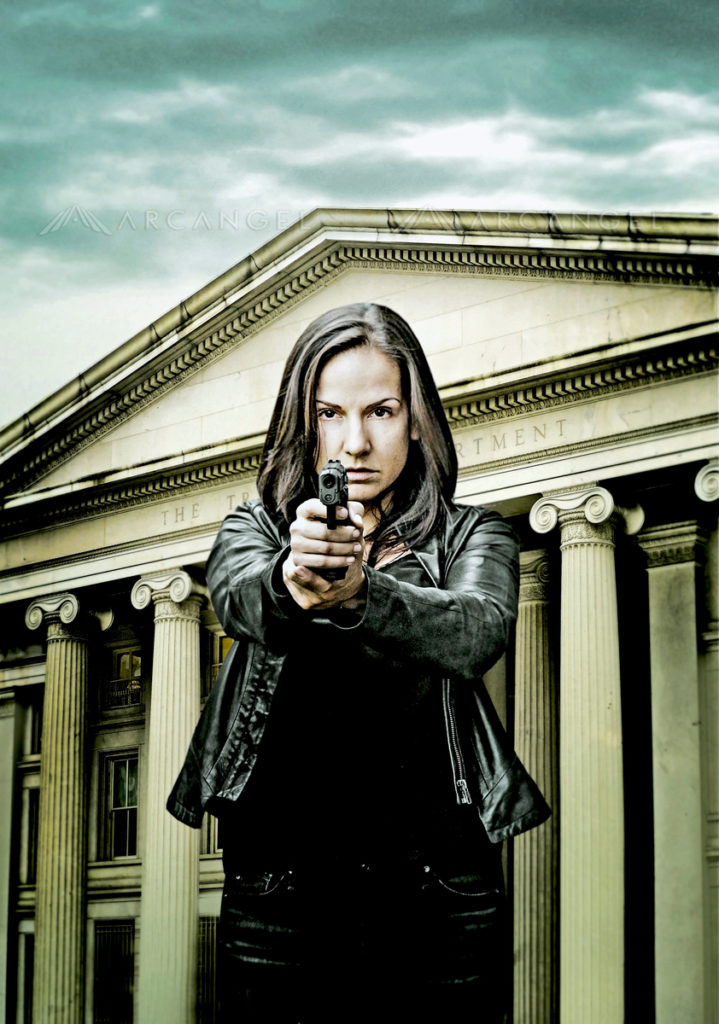
AA1695450 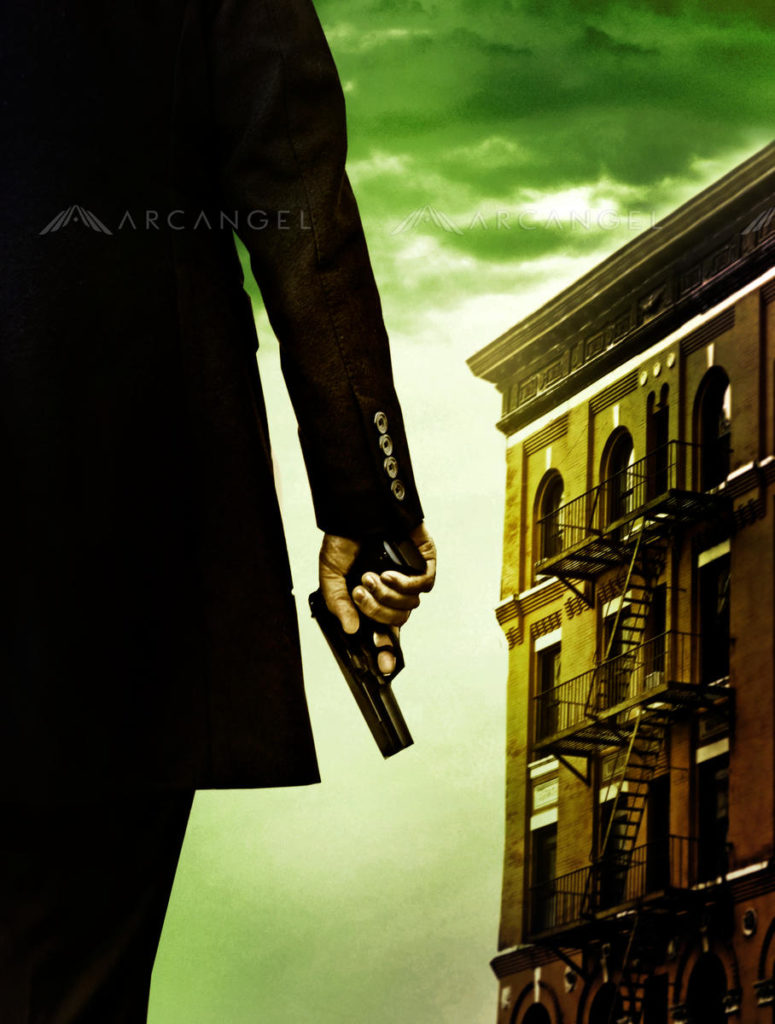
AA1930898 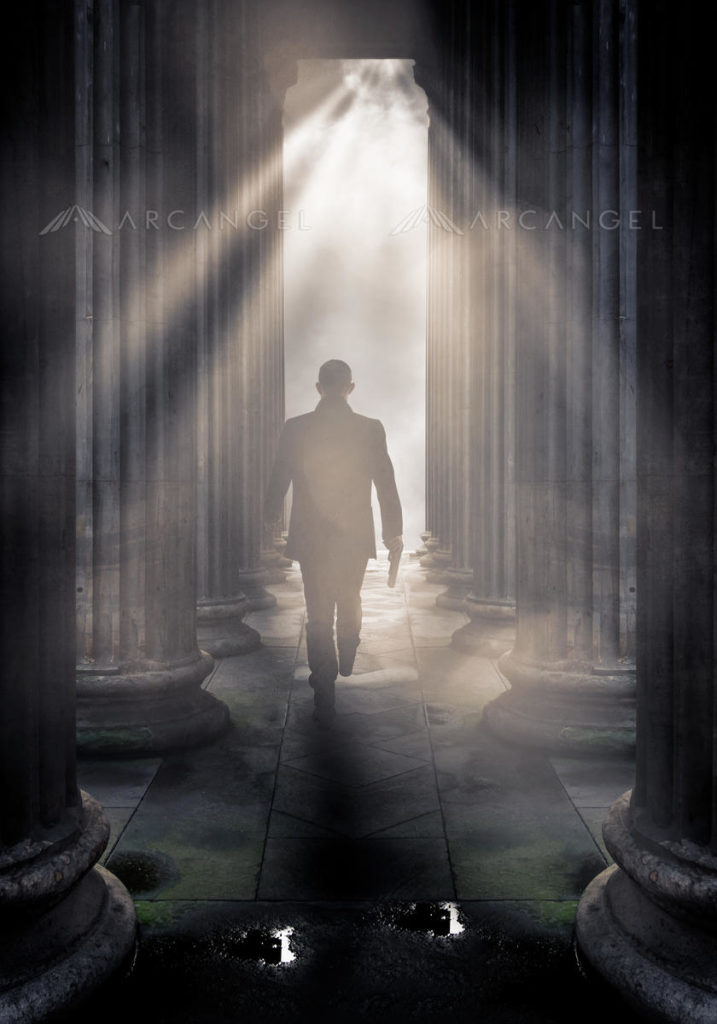
AA11233376 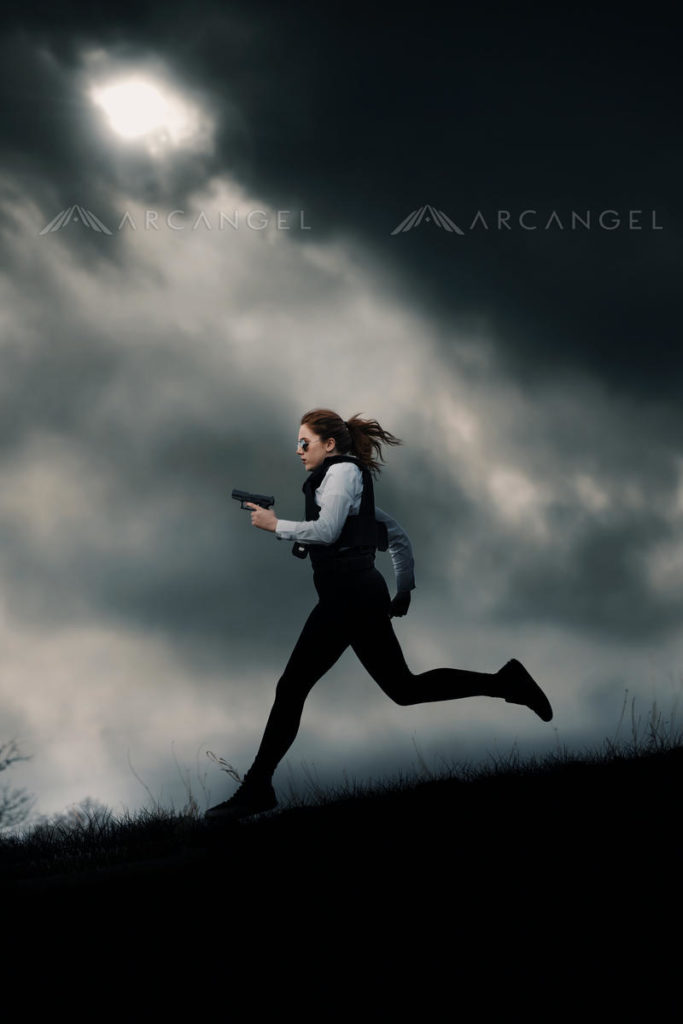
AA11256750 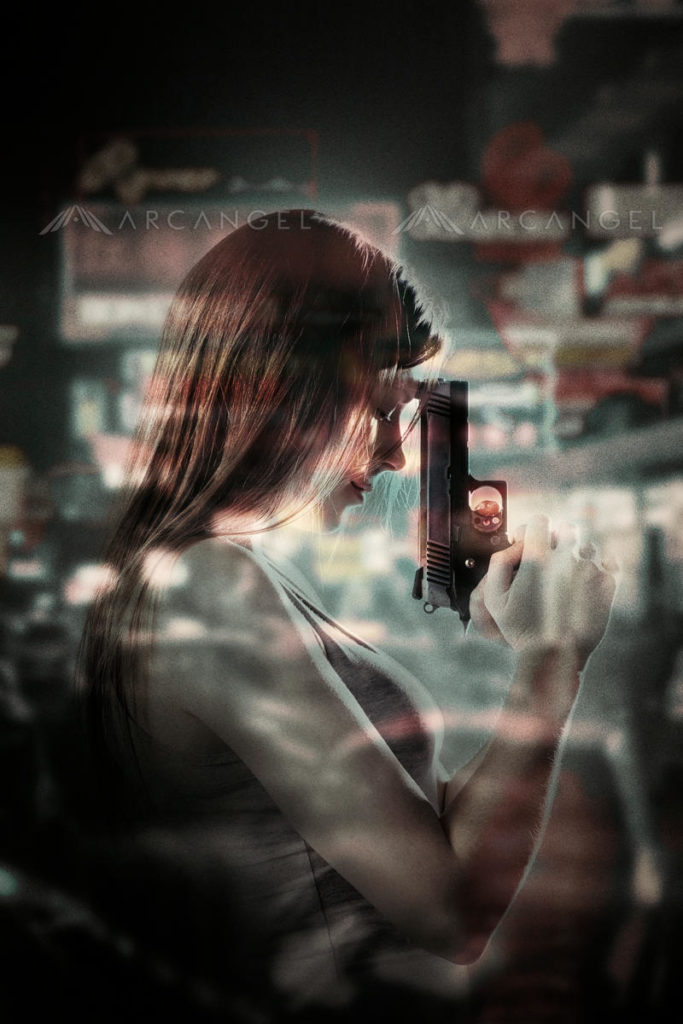
AA1867166 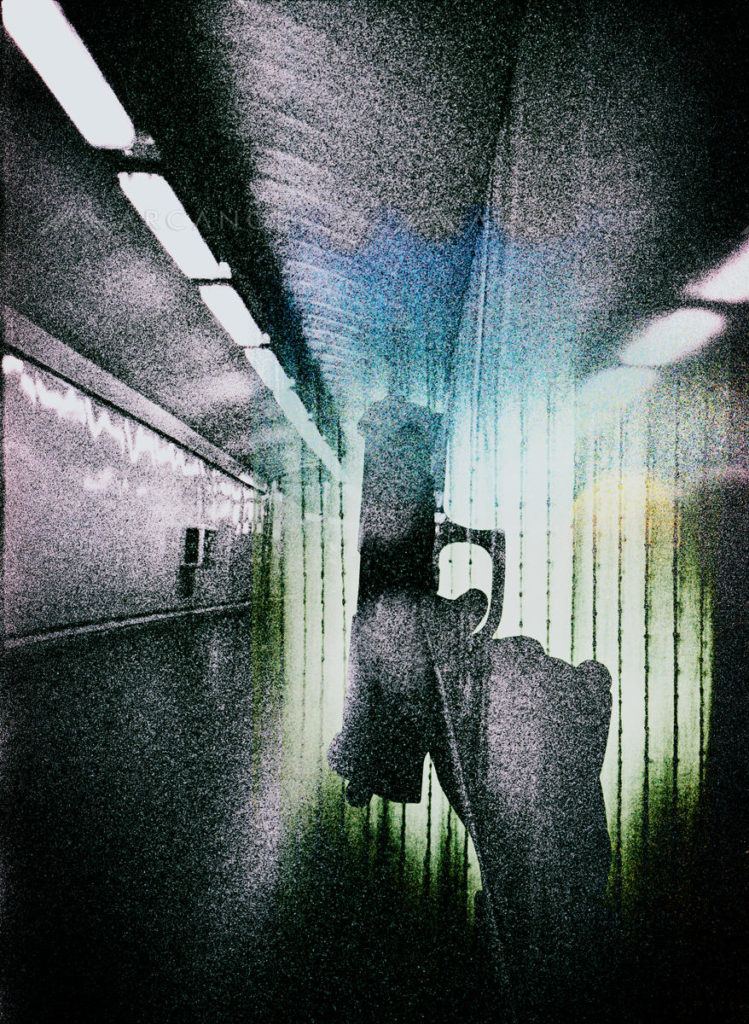
AA11333833 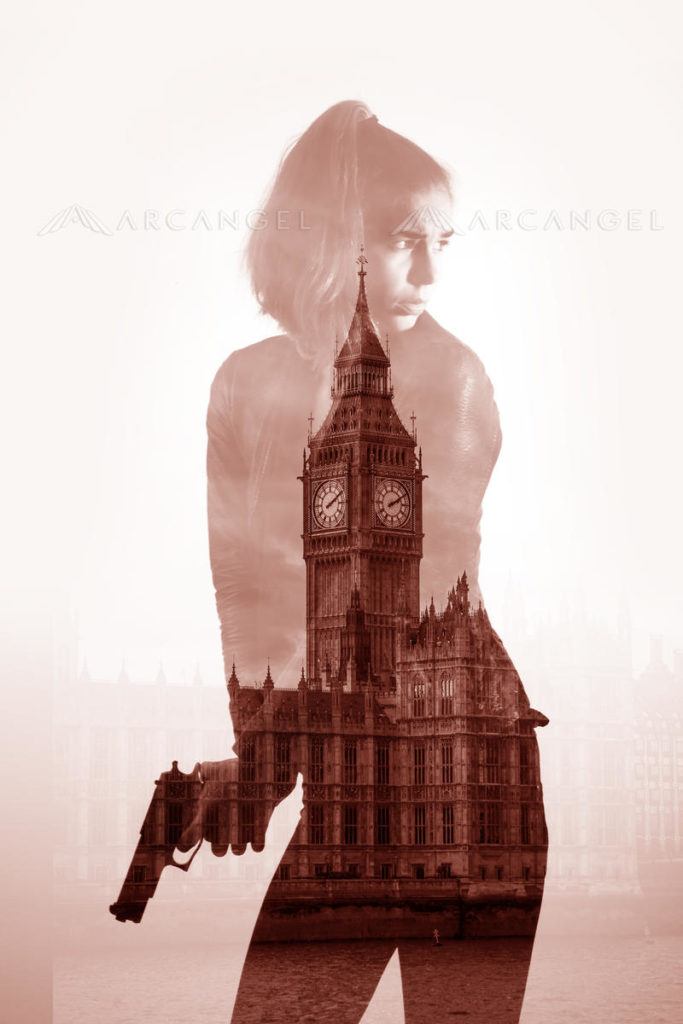
AA11067277
Post-production techniques can be used to create many different moods and styles, as in these examples.
5. General guidelines
Last but not least – the following tips apply to all types of imagery in book cover design!
- Simplicity: Focus on what story the image tells – avoid multiple elements that compete for attention
- Diversity: We need a wide range of age groups, different genders and ethnic backgrounds
- Copy space: Always leave enough space in your composition for titles and credits
- Model release: Signed model releases must be provided for any identifiable individuals
We highly recommend to have a look at Photoshop Guru Dave Wall tutorials! He will give you ideas and tips about how to apply special effects to your thriller images. https://blog.arcangel.com/category/tutorials/

